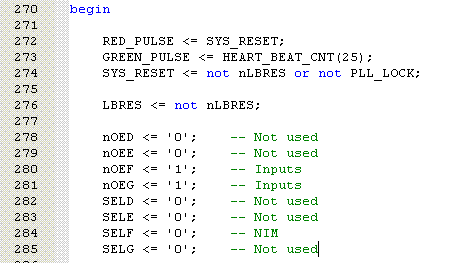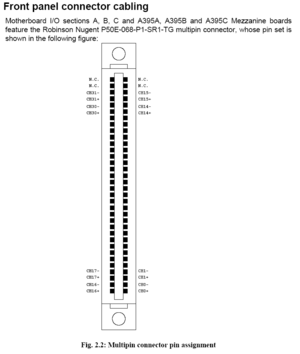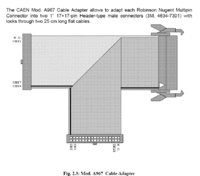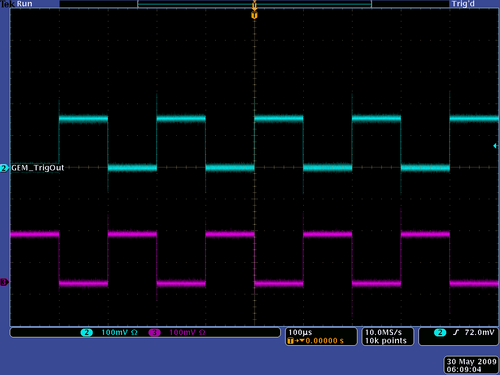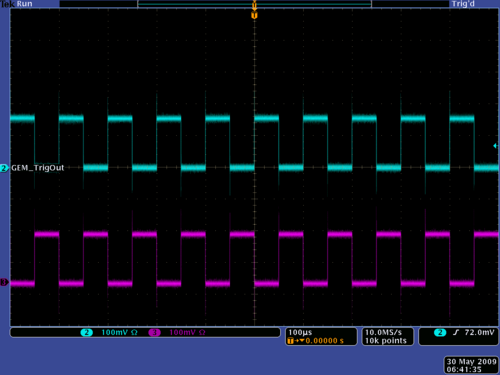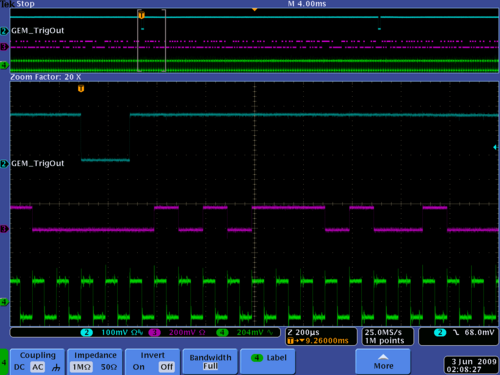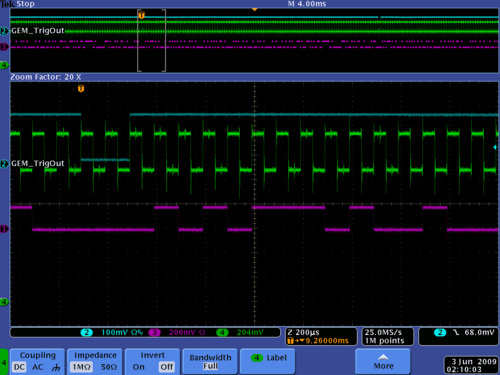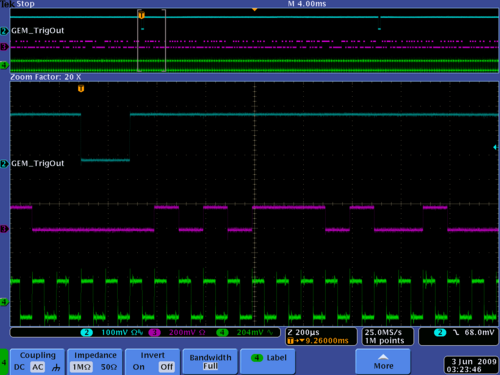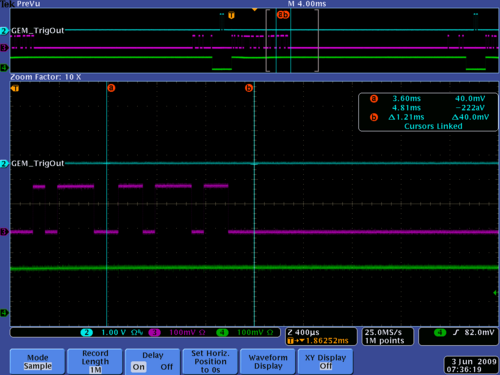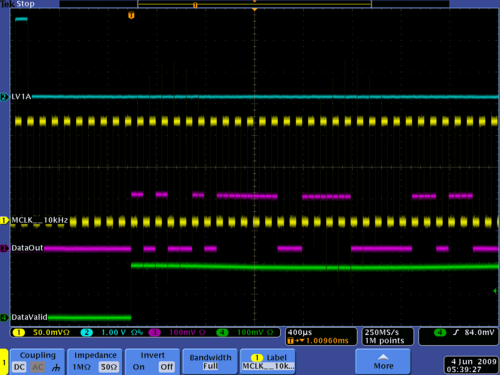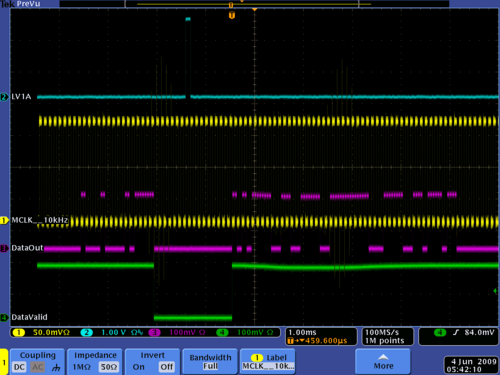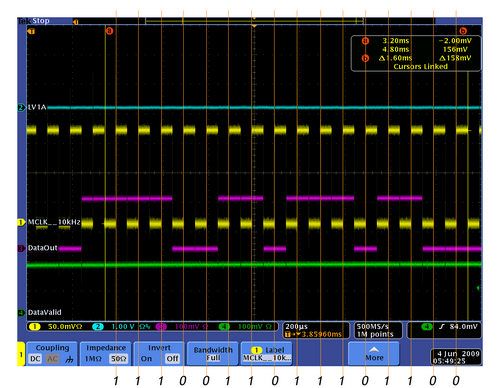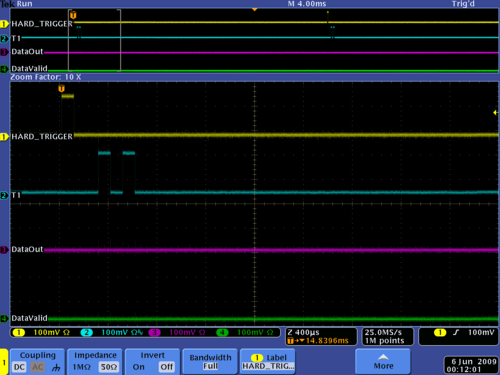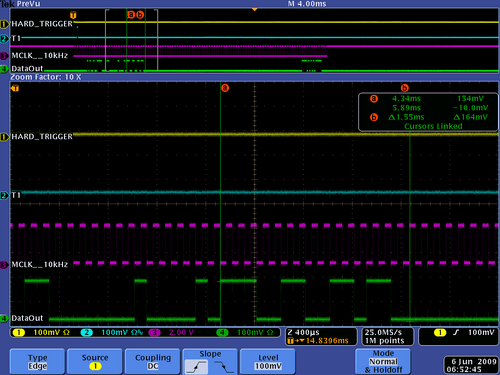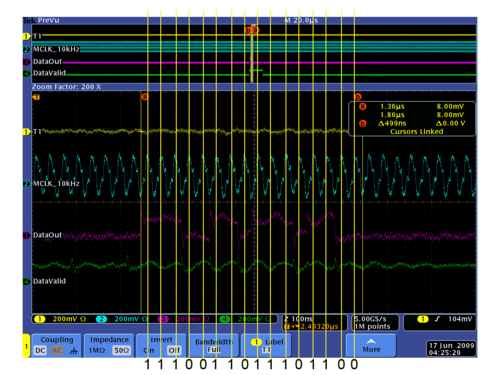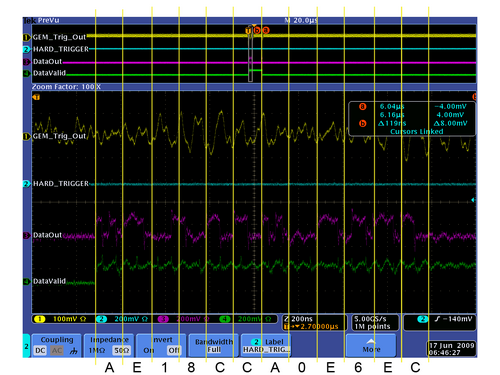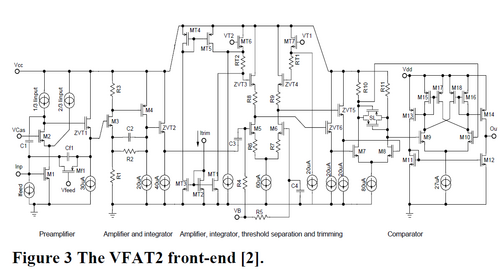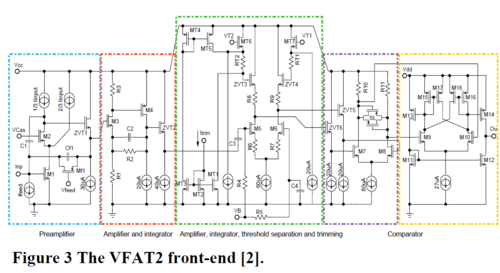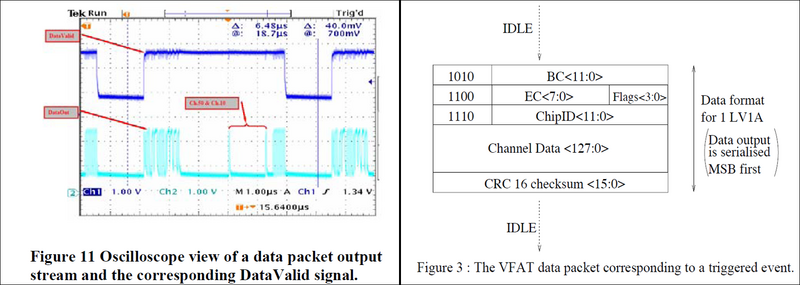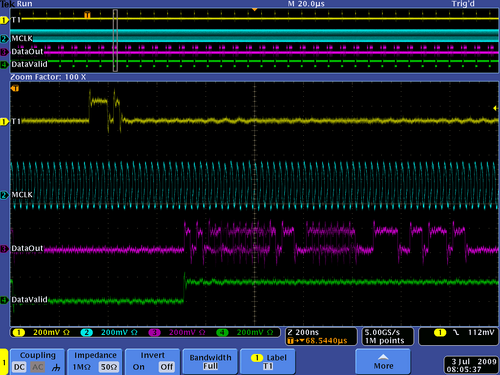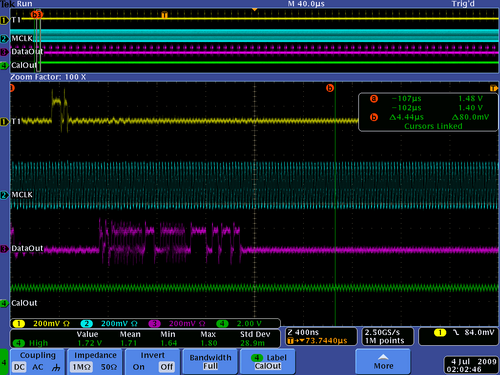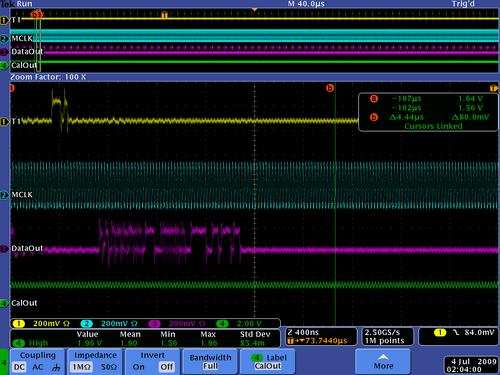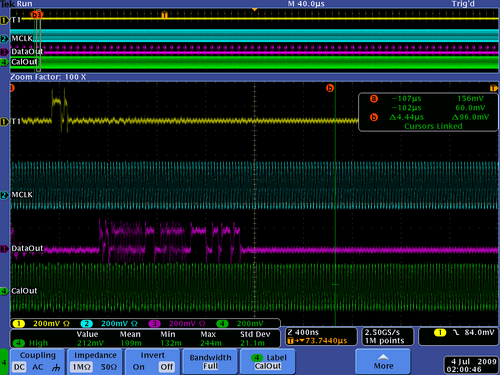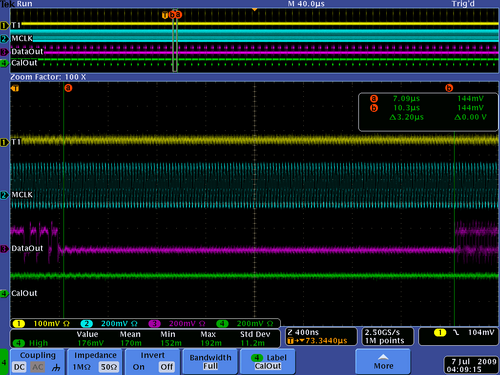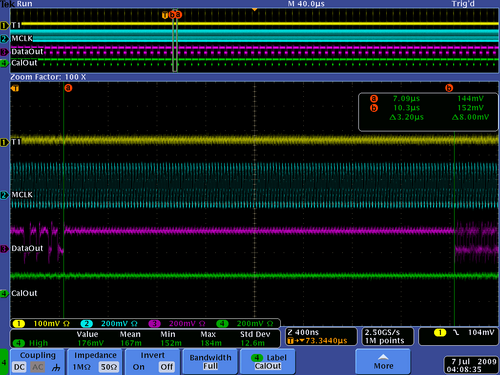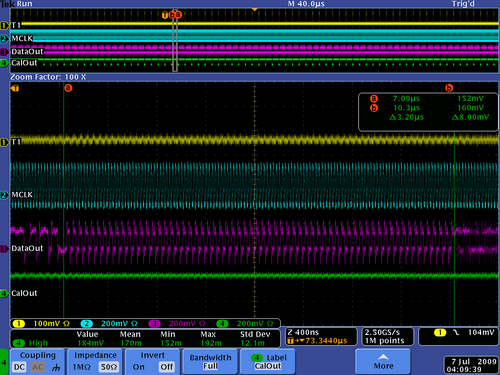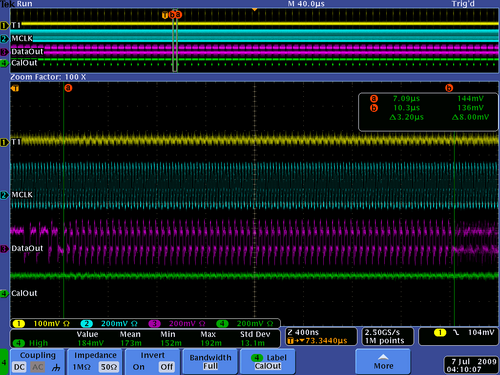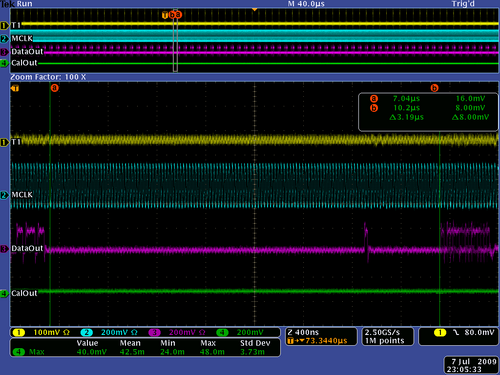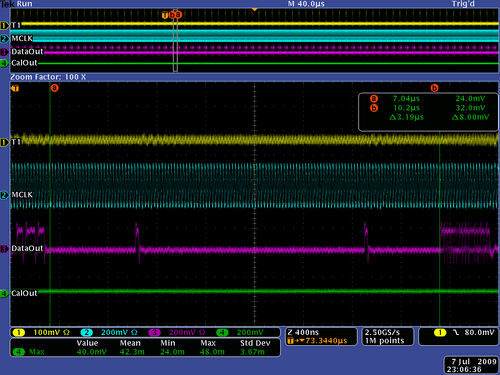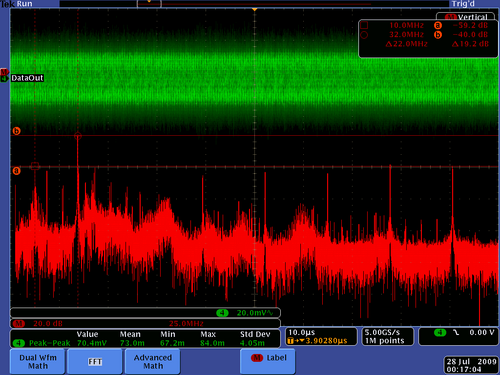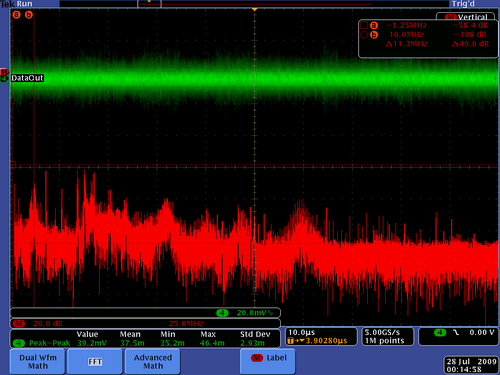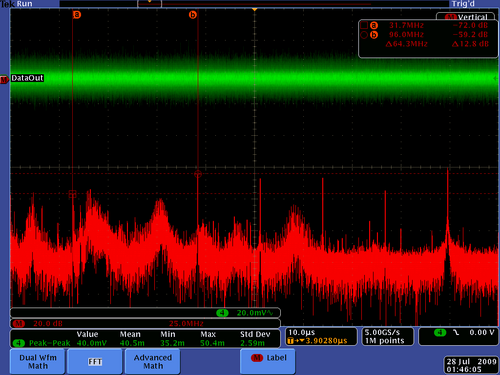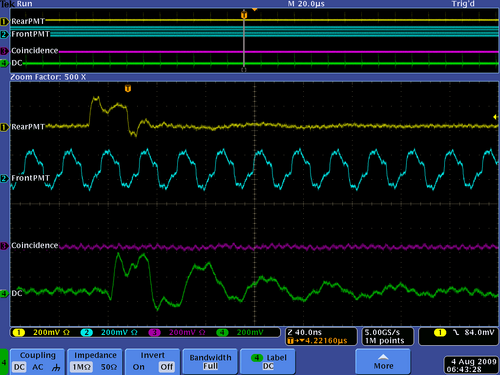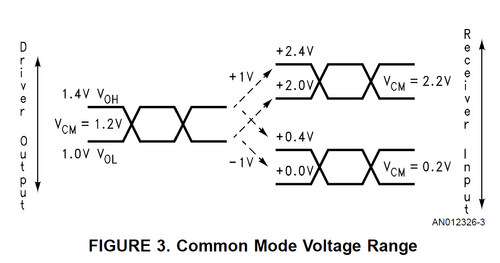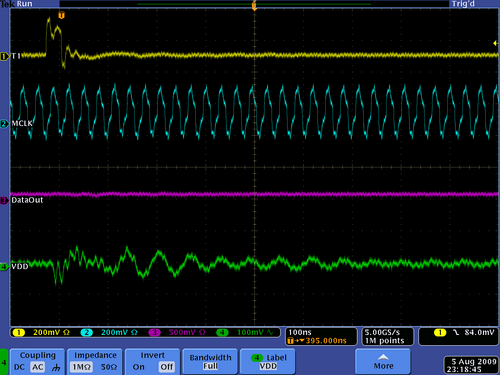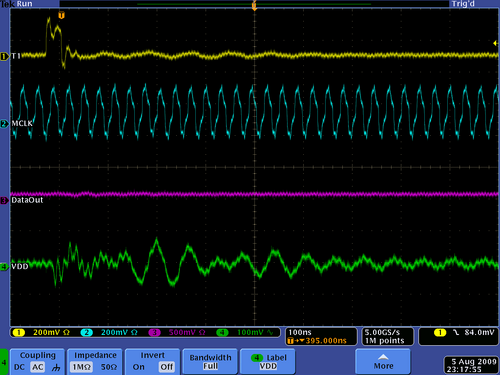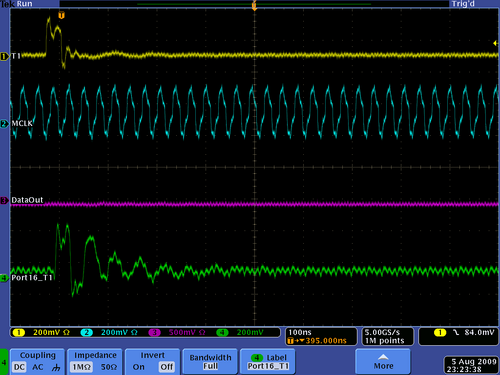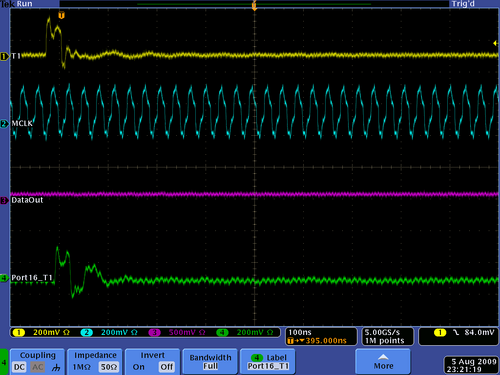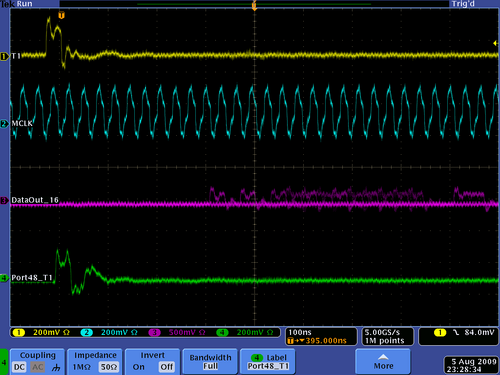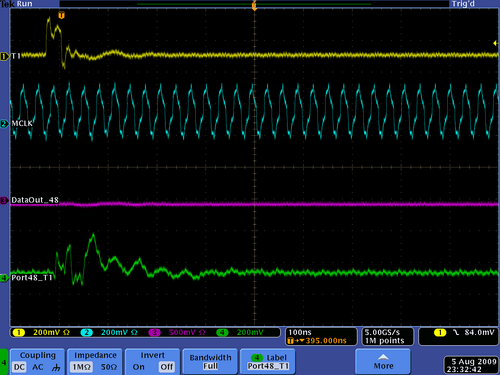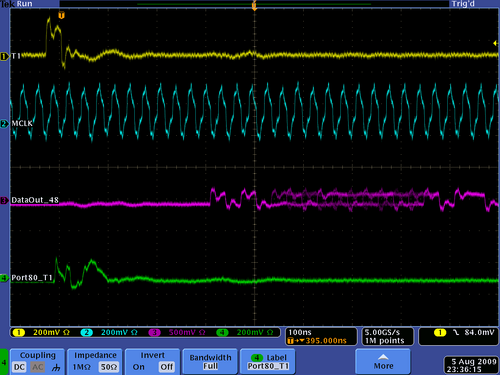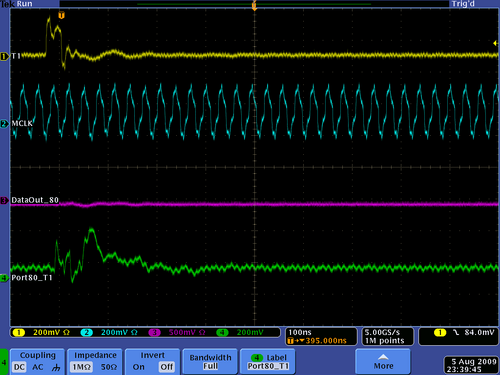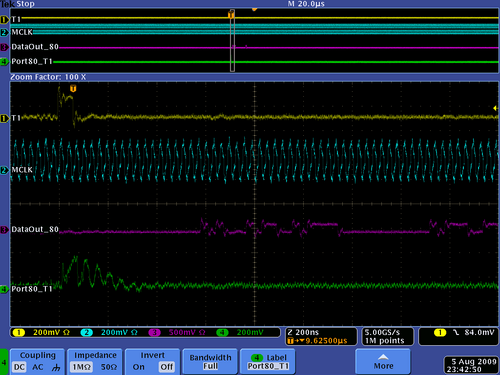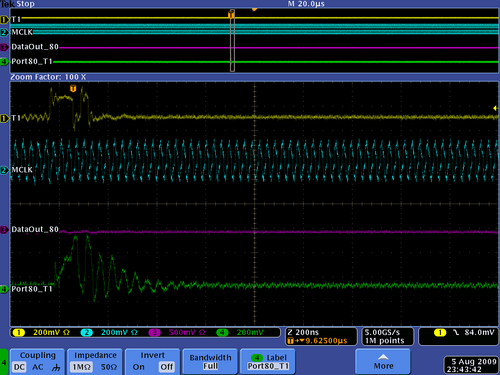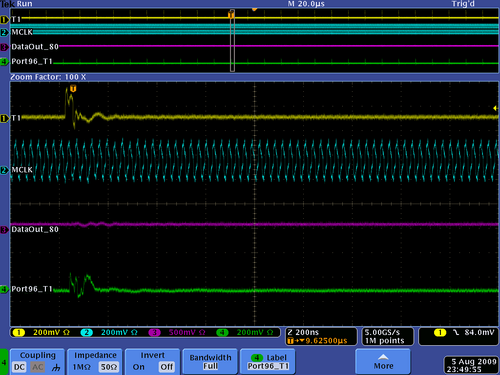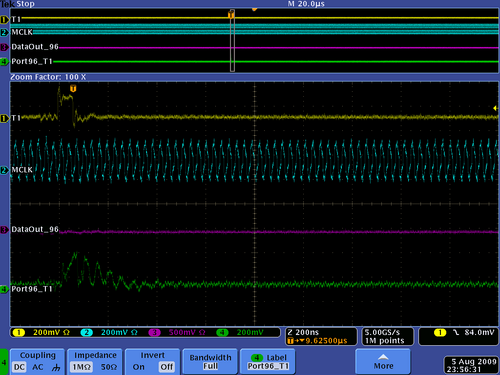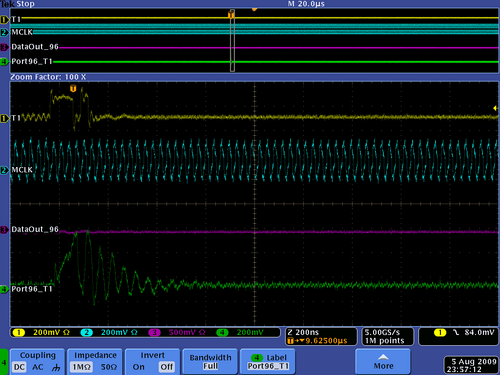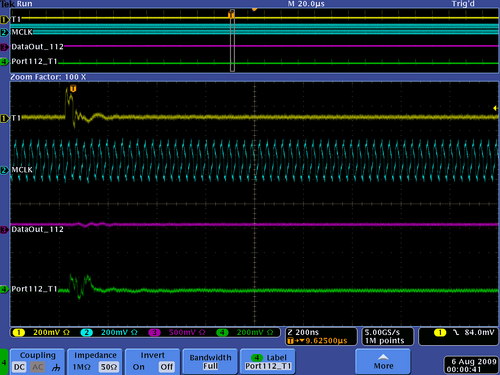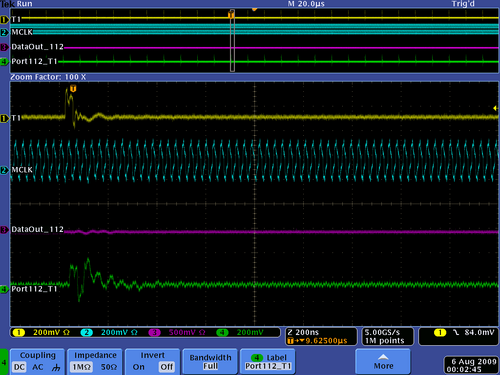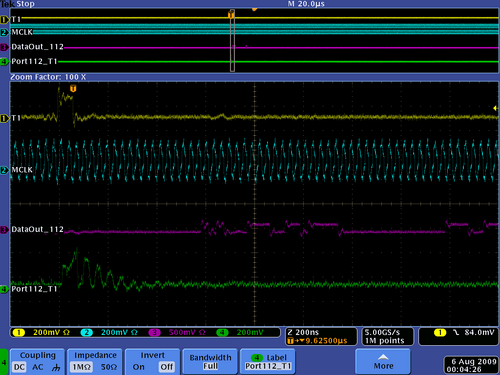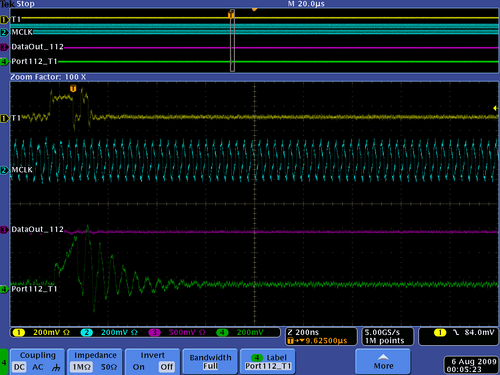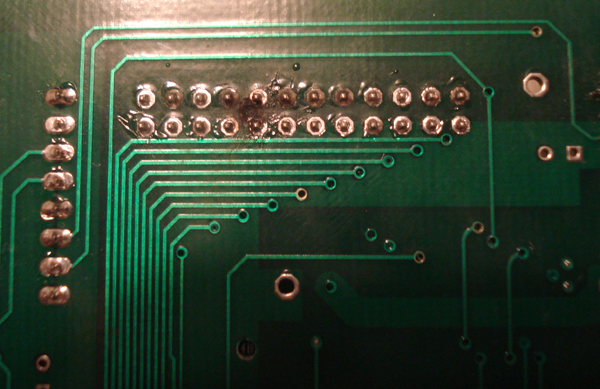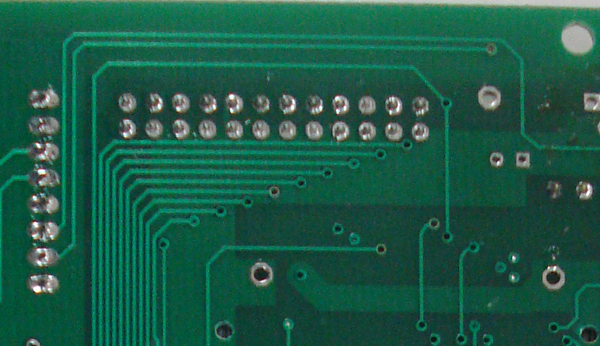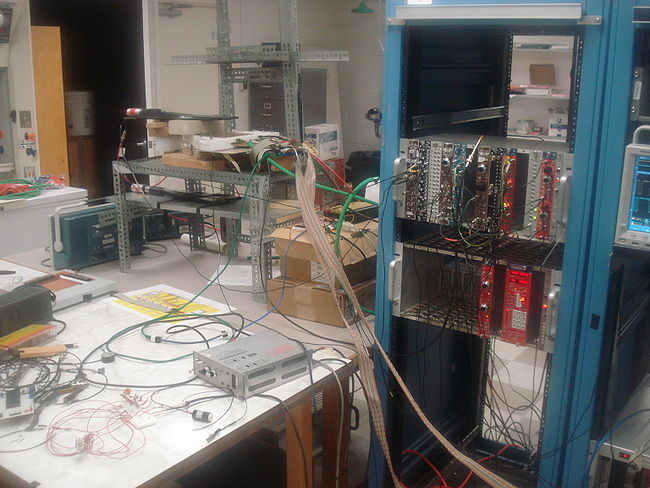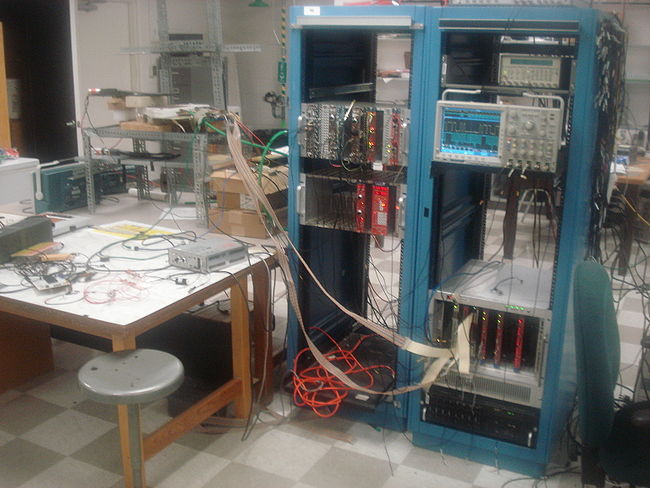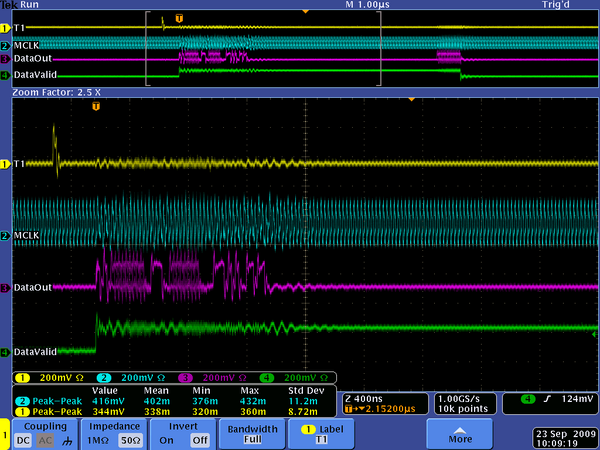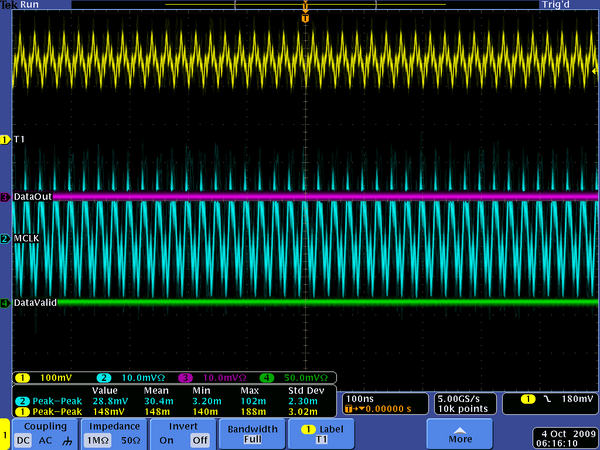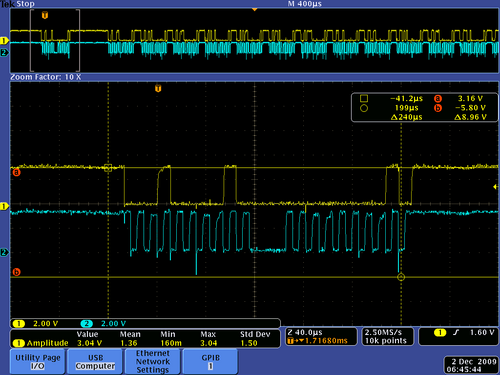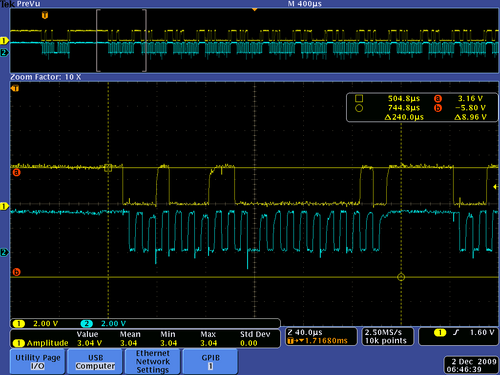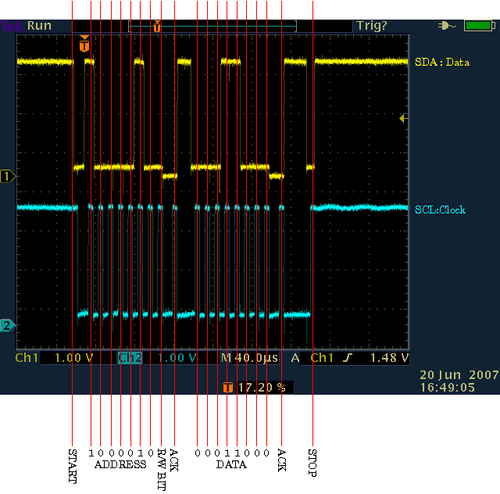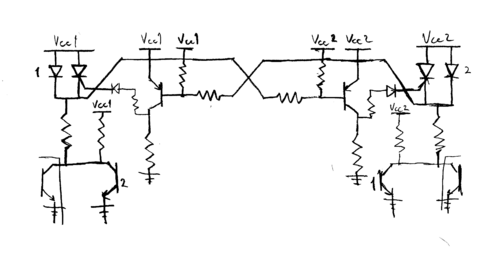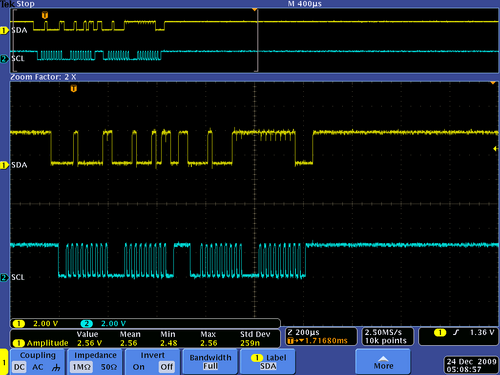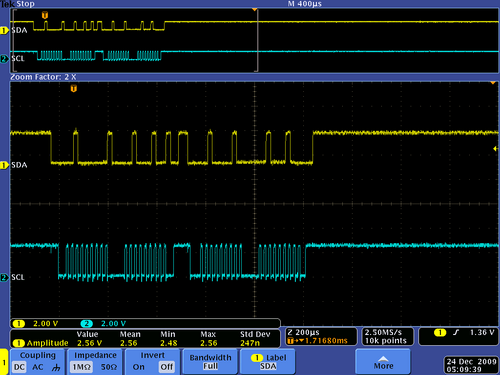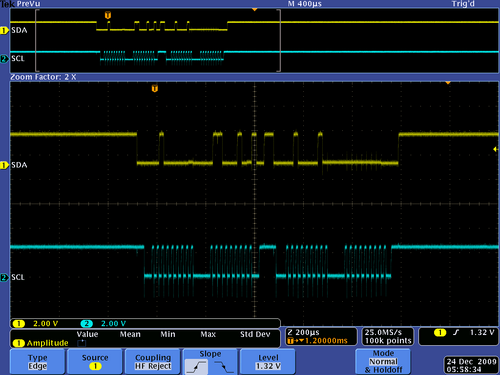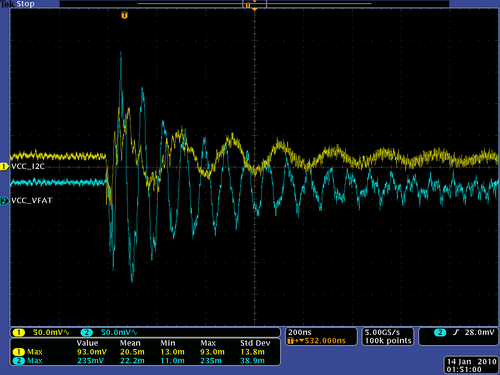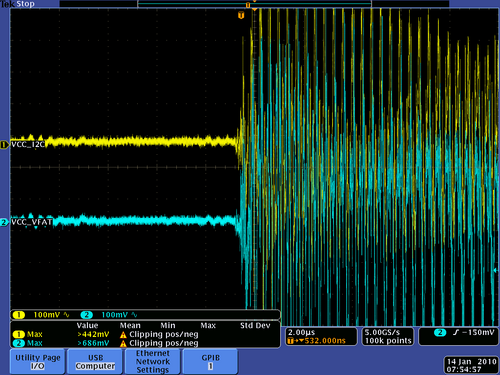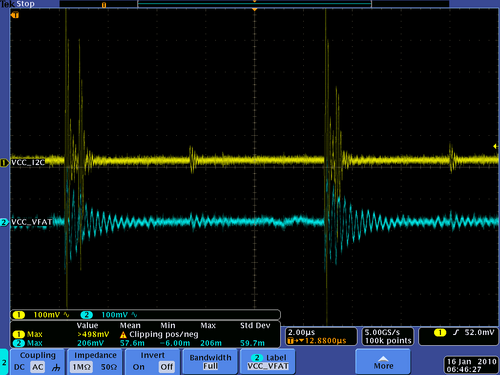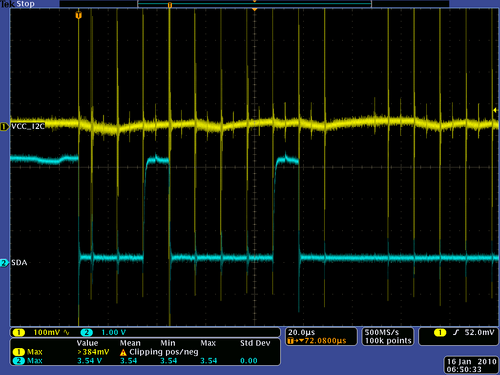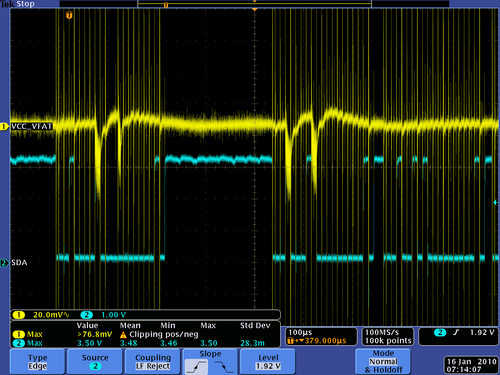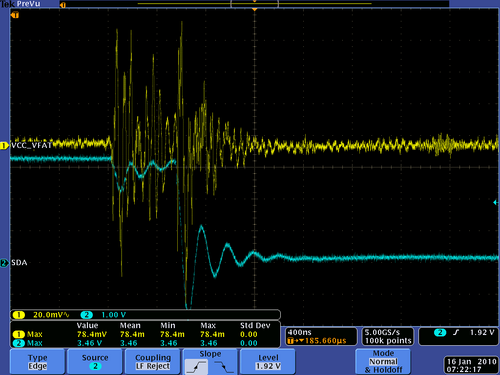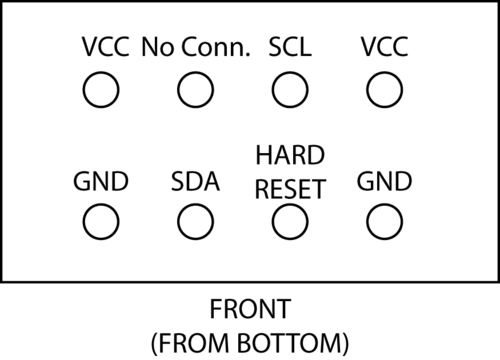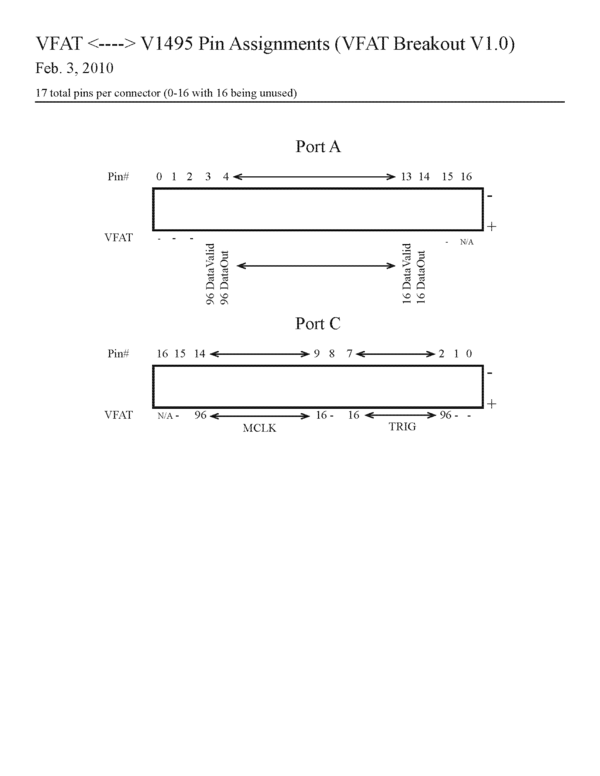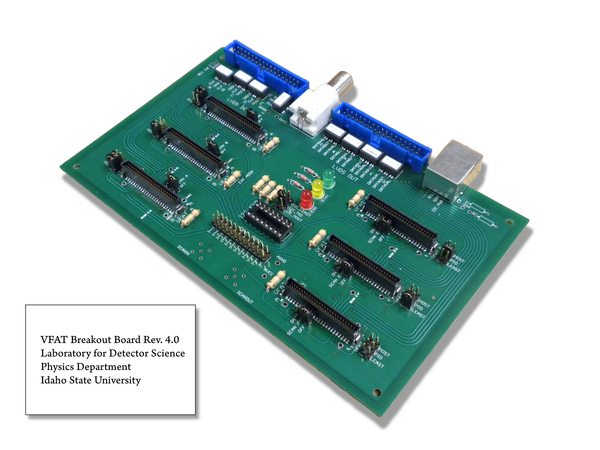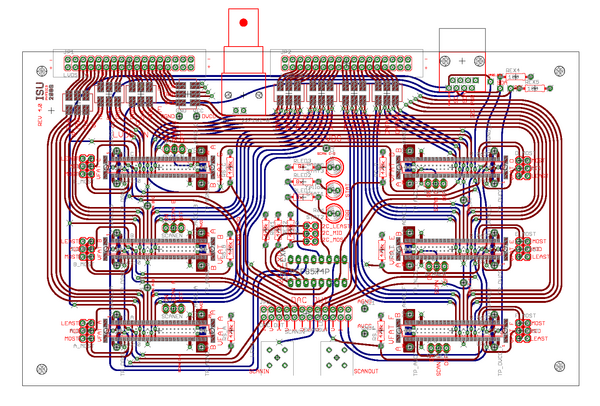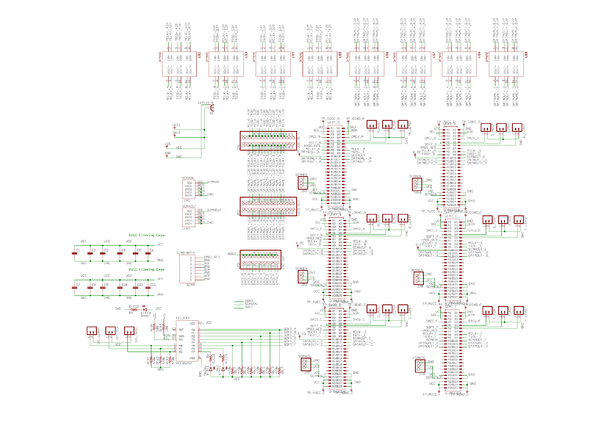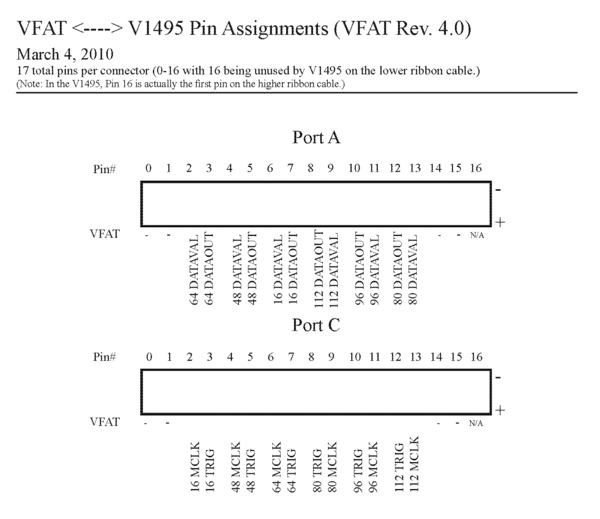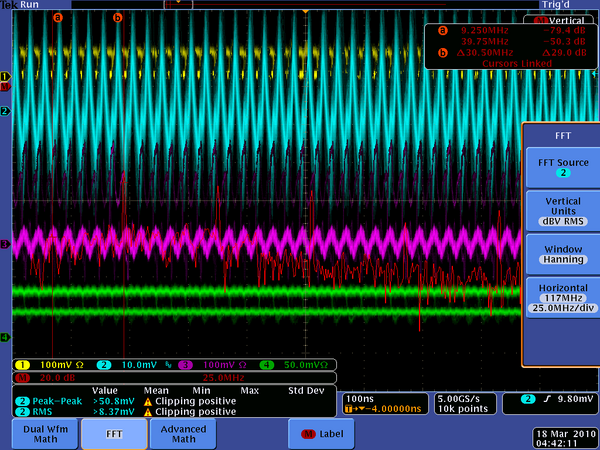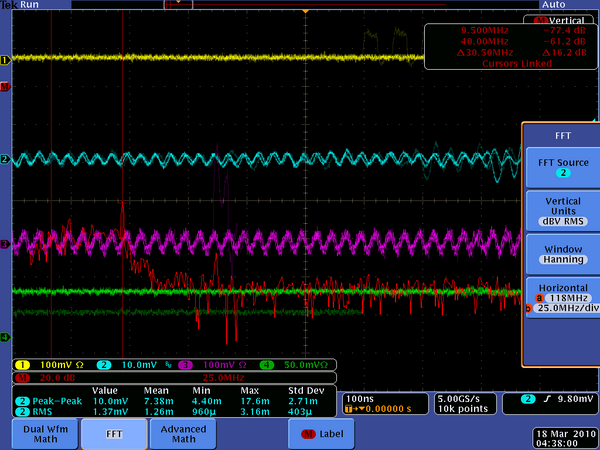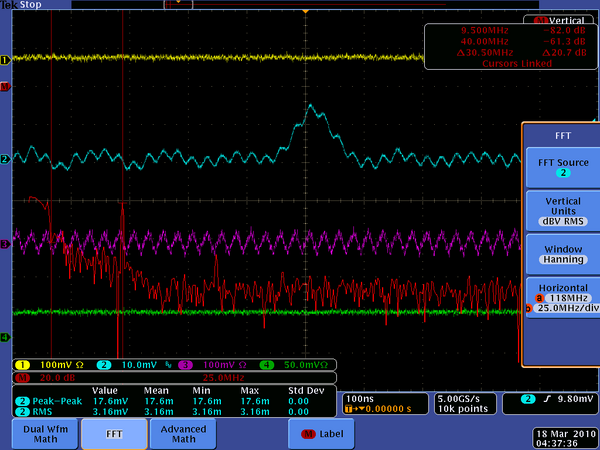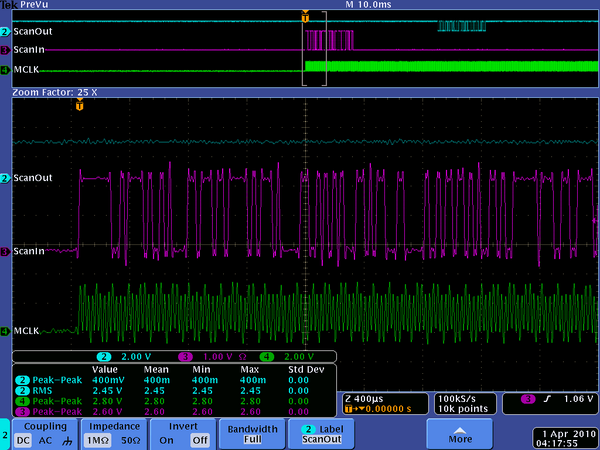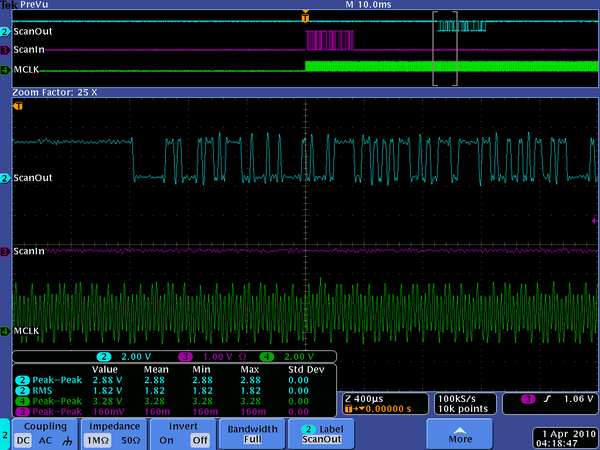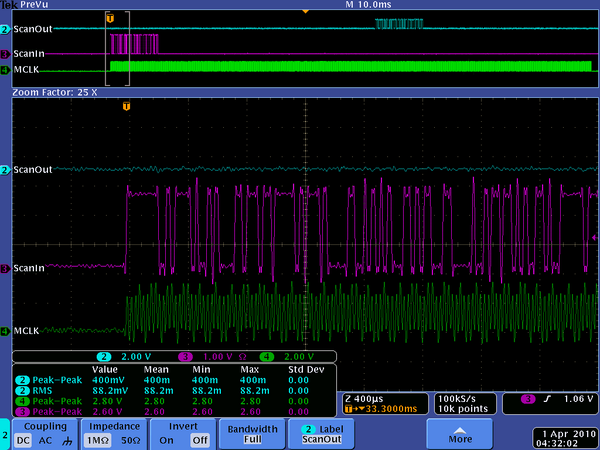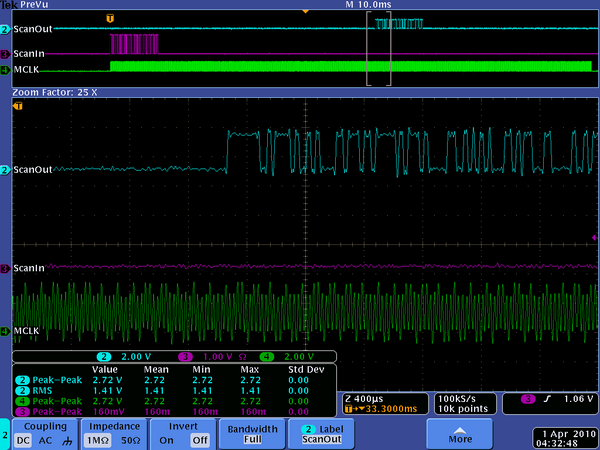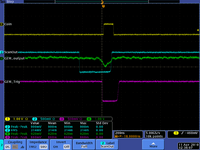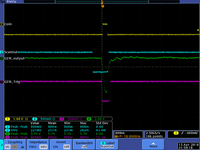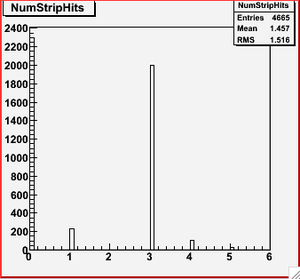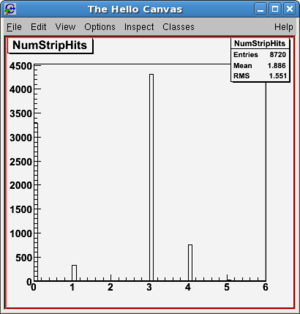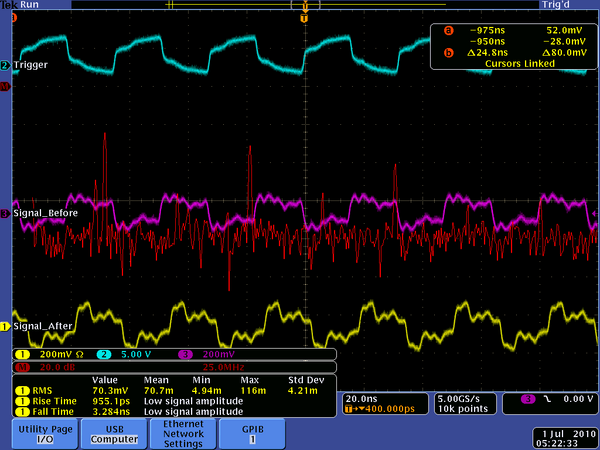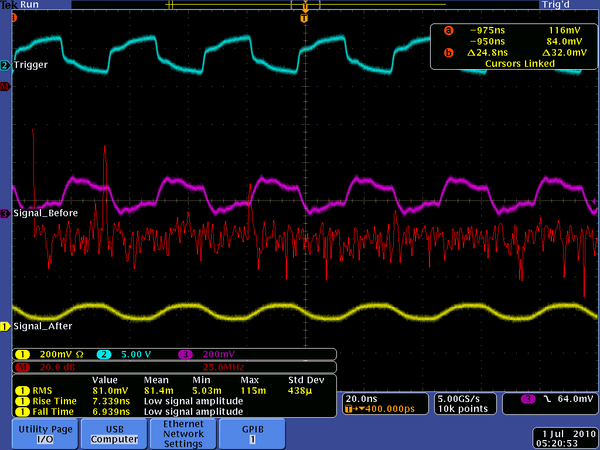Warren Parsons Log Book
This tracks My Daily Progress developing the VFAT readout
VFAT2 Manuals
5/14/09
Firmware
Today we started looking at the VHDL firmware programs from Ben Raydo at JLab. Our goal: To determine what the general description of the firmware program is and determine an outline of its functionality.
Quartus II
Quartus II has a fairly good tutorial for usage. My goal is to complete this tutorial by the end of the week.
I also started to familiarize myself with the VHDL programming language.
5/15/09
Spent vast majority of day learning VHDL syntax.
Spent some time reviewing the GEM Readout Controller Firmware Status
Spent some time reviewing the v1495 instruction manual ( the Quartus II instructions in particular )
Spent some time reviewing the VFAT instruction manual
- Is there a primer somewhere on how to communicate via/with VME?
- How about this http://www.vita.com/vmefaq.html
I need to write down how to get into the DAQ as well as ROC xterm windows.
- Tamuna can show you the above
5/18/09
- From the manual on the VFAT2
- Are we using the Roman Pots or the GEM version for the channel assignments? (I assume the latter.)
GEM version
If I understand the underlying functionality of the output of the VFAT2 then the basic idea is that it transfers the hit data from SRAM1 to SRAM2 as soon as there is a LV1A signal (100) sent to the VFAT2 via the "T1" line (after the latency time programmed into the Latency Register with a default setting of 6.4us).
I thought the max latency is 6.4 us and the default is zero
Once data is transferred from SRAM1 to SRAM2 it immediately starts outputing the information on "DataOut" at the "MCLK" rate of 40Mhz (I assume to be ultimately governed by the v1495). Valid data can be found on the "DataOut" line as long as the "DataValid" line is high. Thus the LV1A signal on "T1" followed by a transition to high on the "DataValid" line should set off the v1495 data capturing routine. Data is clocked out in FIFO order if more LV1A signals are sent to the VFAT2 before all of the data has been transferred out of the VFAT2.
I am unclear if the V1495 firmware is programmed to begin a read when the LV1A trigger transitions or when DataValid transition. I think it should be when DataValid transitions.
Tamuna and I tried to log onto the ROC from scratch, but the ROC keeps saying that it can't find some boot file. I started to look through the ROC file on Dr. Forest's wiki pages, but I do not find this to be a straightforward process of rebooting the ROC. The following entry is related, and it may be helpful.
- Would it be useful to purchase the VMEbus Handbook, 4th Edition by Wade Peterson? I have personally never worked with such a complicated system with so few written resources as the VME system. I have now read quite a bit about the history of the VME system, and yet I have yet to be able to read anything on how to actually use this system. How does one begin to even crack into this system? It is a full-blown microcontroller complete with its own operating system including the complete gamut of hardware and software.
- Where did we get this Quartus II software from and why has the 30-day trial period run out? This may be making it so I cannot compile a project and get it loaded into the v1495 via the ROC. I get this impression from the fact that when I attempt to compile the project only one error comes up and that is that the 30-day evaluation period has expired. Do we have a license for it somewhere?
Licenses are free. see http://wiki.iac.isu.edu/index.php/Qweak_V1495_FPGA_Programming for the download page
5/19/09
Tamuna, Brian, and I worked on trying to fix the MVME6100 but to no avail. I think it's actually getting worse the more we try to get it working. We may need to wait until Dr. Forest returns before attempting to fix it. I plan on reading some more information that I found on the whole VME system as well as the MVME6100 and its associated OS, VXWorks, which is apparently used in a lot more applications than I was previously aware.
I was able to contact Ben Raydo. Thankfully he had given me quite a few suggestions on how to get started with the v1495 side of this project. I am sifting through the information he has given me.
I have found much more information on the VME system today including information on the MVME6100 (as already stated) as well as other documentation.
5/20/09
I had to brush up a bit on Verilog to figure out what was going on in the v1495usr_hal.vqm file because it is written in Verilog HDL. I have added its description above.
By whatever mystical powers the ROC is apparently now working again. I would however like to know exactly what happened to get it working.
I still need a license for Quartus II in order to continue working directly on the v1495. However, I did spend a great deal of time reading how to use the MVME6100 as well as the v1495.
5/21/09
I was able to figure out how to get the license for Quartus II and to compile an .rgb file that can be loaded into the v1495 USER FPGA. I was not aware before that we already had a completely working firmware version for the v1495 USER FPGA.
- In looking through the VHDL code to figure out how it works I have made the following discoveries
- The code in GEMReadout.vhd governs the behavior of the GEMReadout component.
- Code governing the G0 (Gin(0)) and G1 (Gin(1)) Inputs
- In GEMReadout.vhd the signal GIN(1) gets loaded into HARD_TRIGGER. HARD_TRIGGER then gets loaded into the HARD_TRIGGER of the GEMTrigger component as well as the HARD_TRIGGER of a GEMTxChannel component. Thus far I am unclear what is done with this HARD_TRIGGER signal for these components. I will figure this out on Friday, hopefully.
- Still in GEMReadout.vhd the GIN(0) signal gets loaded into the inclk0 value of the PLLBlock component. In PLLBlock.vhd (which governs the behavior of the PLLBlock component), this c0 signal eventually ends up being connected to clk(0) for the altpll component. The altpll component appears to be a predefined cell in Quartus II. I hypothesize that this component is just a pll with user-defined settings. Hopefully on Friday I can find some documentation on this component to figure out exactly how it works. Thus in GEMReadout.vhd we put in our original signal G0 and get out a locked version on PLLCLK.
- This appears to be in GEMReadout.vhd where the process trigger PLLCLK is generated. All other components that take this value in on one of its ports has it as an input rather than an output.
- nLBRES is a system-wide asyncronous reset
- LCKL is a local bus clock
- I cannot figure out where this is being generated because I lose its trail into the v1495usr_hal.vqm file going to
5/22/09
altpll is indeed an Altera Megafunction. inclk0 is the reference clock to the output clocks c0 and c1. c0 is exactly in phase with inclk0 which appears to be running at a nominal frequency of 32Mhz which as stated before ultimately ends up being the PLLCLK signal in the GEMReadout block. c1 is a phase shifted version of inclk0. Although it states that this ends up being PLLCLK_90 in GEMReadout.vhd, it is actually 180 of phase shift, i.e. an inverted clock pulse. I don't know why it was given this name since it doesn't make sense.
These calculation can be done using the input parameters to the altpll plock in the PLLBlock.vhd code from the following lines.
altpll_component : altpll GENERIC MAP (
- clk0_divide_by => 1,
- clk0_duty_cycle => 50,
- clk0_multiply_by => 1,
- clk0_phase_shift => "0",
- clk1_divide_by => 1,
- clk1_duty_cycle => 50,
- clk1_multiply_by => 1,
- ;clk1_phase_shift => "15625", <-- This is the phase shift in ps.
- compensate_clock => "CLK0",
- ;inclk0_input_frequency => 31250, <-- This is the input frequency given as the period in ps.
- intended_device_family => "Cyclone",
- invalid_lock_multiplier => 5,
- lpm_hint => "CBX_MODULE_PREFIX=PLLBlock",
- lpm_type => "altpll",
- operation_mode => "NORMAL",
The units for the frequency cannot be found in the literature. The way I figured this out was to create an altpll Megafunction block with a strange frequency. After it generated the VHDL code for the megafunction I was able to see that the output of the inclk0_input_frequency was in ps.
5/26/09
- On the question of I/O Levels.
- There are two different pin voltage levels to consider here: the I/O levels coming into the board and the I/O levels of the Cyclone chip.
- The input levels going into G0 and G1 are LVTTL (3.3V). This information, as well as the pin output assignments, are located under the menu "Assignments->Pins" in the Quartus II program.
- This information is part of the project that was created for this design. What that means is that it is not enough to just import the text files for this project and compile it. One needs the project file ".qfp" which has all of the proper pin assignments including location and levels.
- The I/O levels going into and out of the v1495 is much more difficult to ascertain. The following is an example from the GEMReadout.vhd file which programs the levels as well as whether a pin is input or output.
- The nOEx signals are whether or not a bidirectional pin is configured as an output or an input. A logic level "0" is an input.
- The SELG signals are whether or not a pin is TTL or NIM on the G I/Os. A logic level "0" indicates that this is a TTL level.
- The preceeding was gleaned from the v1495usr_demo project that can be downloaded for free from CAEN. There must be some hardware external to the Cyclone chip but still on the v1495 that selects these settings.
- Thus far I have not found the documentation that demostrates how this is actually done. Like I said before, at this point I have only been able to glean the information from the v1495user_demo project. Therefore, it would not surprise me if this information was somewhat faulty.
The following code was used to see if I could turn off the Red LED:
RED_PULSE <= SYS_RESET; GREEN_PULSE <= HEART_BEAT_CNT(25); -- SYS_RESET <= not nLBRES or not PLL_LOCK;
After resetting the VME crate, it appears to have worked. I was previously under the impression that one did not have to bump the power on the v1495 to get it to use its new firmware. I will have to explore this.
The rate at which the Green LED blinks is based off of the following code out of GEMReadout.vhd.
signal HEART_BEAT_CNT : std_logic_vector(25 downto 0);
process(LCLK, nLBRES) begin if nLBRES = '0' then HEART_BEAT_CNT <= (others => '0'); elsif rising_edge(LCLK) then HEART_BEAT_CNT <= HEART_BEAT_CNT + 1; end if; end process;
Basically what these lines of code are saying is that HEART_BEAT_CNT is a 26-bit register that originally gets set to '0'. On either a change in LCLK or nLBRES and if LCLK is a rising edge, then the HEART_BEAT_CNT gets incremented by one. From the lines of code shown before this block, GREEN_PULSE is set if the MSB of HEART_BEAT_CNT is set. Therefore, the Green LED should blink at a 50% duty cycle of 2^(25)*(20Mhz)^(-1) = 3.35 s for a 20MHz PLL frequency (i.e. on for 1.67s, off for 1.67 s).
Tomorrow I will need to determine what the signals "SYS_RESET, nLBRES, and PLL_LOCK" actually are and what they mean. As I have alluded to before, I loose the trail for many of these signals at the Cyclone package level and can only infer what their actual purposes are at this point based on the code from the GEMReadout as well as the v1495usr_demo.
5/27/09
I then doubled the PLL frequency to see if it would double the rate at which the LED was blinking. It worked.
- What this means is that the LCLK signal is somehow internal to the chip and has nothing to do with the signal that is being injected on G0.
I then changed the code back on the RED LED to see if I could restore the RED LED status with the new faster GREEN LED rate.
- This worked as well.
I attempted to change the firmware back to the original 20MHz configuration, but it does not seem to have slowed down the blinking GREEN LED at all. I am wondering if the 20MHz version was somehow corrupted. I will recompile and send this over to see if I can slow the blinking GREEN LED down.
Note: This is because the Green LED depends on the system "LCLK" rather than the "PLLCLK" which is supposed to be a reflected version of the G0 input.
The following multipin connector settings can be found in the v1495 user manual and show explicitly where the proper pin connections can be made.
For my last item of the day I attempted to reset the Green LED to blink with "PLLCLK" rather than "LCLK." This only led to the Green LED remaining solid. This, as well as our previously failed attempts to lock with the frequency of the PLL, seems to suggest that the v1495 is not even registering the G0 input.
5/28/09
Today I attempted to get the LED to blink to the LCLK rather than the PLLCLK. It did not work.
Later I attempted to get C(1) to output the LCLK, which drives the Green LED, rather than PLLCLK_90. This also did not work.
Both of these seem to suggest that the Cyclone chip is somehow to communicating to the I/O ports on the v1495.
5/29/09
I was able to fix the firmware uploading code so that the board now resets with the new firmware loaded as well as actually exiting the program. I did this by making the following changes to the functions in v1495.c.
int
v1495reload()
{
volatile V1495 *v1495 = (V1495 *)0xfa510000;
int
v1495reload(unsigned int baseaddr)
{
volatile V1495 *v1495 = (V1495 *)baseaddr;
int
v1495firmware(unsigned int baseaddr, char *filename, int page, int user_vme)
{
.
.
.
v1495reload(baseaddr); // This loads the proper base address it for refresh
return(0); // This used to be an exit(0) command thus never allowing the program to exit properly.
// I suspect that exit(0) is not a VXWorks function.
}
The following line in v1495reload is actually what resets the v1495; I was tipped off to its presence by Ben.
*Conf_Flash = 1;
Before when the address for the reload function was incorrect, the USER Config Reg was never getting a '1' written to it which is what actually resets it.
I was able to inject a 5kHz clock signal in on A(1) (since A(0) was not working on the cable from the POS-to_LVDS board) and have it output from C(3) as well as its inverse on C(5).
To do this I made the following changes to GEMReadout.vhd with which I also generated its associated .rbf file GEMReadout_A1_2_2.rbf.
-- GEM Breakout Box A CLK Signals C(1) <= LCLK; C(3) <= PLLCLK; C(5) <= PLLCLK_90;
PLL_LOCK <= '1'; --PLLCLK <= GIN(0); PLLCLK <= A(1); PLLCLK_90 <= not A(1);
I also made the GREEN LED blink at a rate of 6.55 sec on and 6.55 sec off which was done with the following changes in code. This comes from the calculation 2^(15)*1/(5*10^3)
RED_PULSE <= SYS_RESET; GREEN_PULSE <= HEART_BEAT_CNT(15); -- I changed this line to the 15th bit of HEART_BEAT_CNT SYS_RESET <= not nLBRES or not PLL_LOCK; -- SYS_RESET <= '0';
process(PLLCLK, nLBRES) -- I changed the process sensitivity from LCLK to PLLCLK begin if nLBRES = '0' then HEART_BEAT_CNT <= (others => '0'); elsif rising_edge(PLLCLK) then -- here as well HEART_BEAT_CNT <= HEART_BEAT_CNT + 1; end if; end process;
On the output of the oscilloscope below, Line2 is the output from C(3) and Line3 is the output from C(5).
When I doubled the frequency on the function generator I observed the following output on the oscilloscope as well as the GREEN LED blinking twice as fast.
This means that for some reason our input on G0 is not getting taken in. All other I/0s on the board appear to be working though!
6/1/09
I removed the bus power from the I/Os in Quartus II to see if it would kill the I/Os. It appears to not have had any effect. Apparently I did not fix anything by adding I/O bus power in the design.
- I learned today what the actual mistake was that was made on the VFAT breakout board. I have some questions relating to this mistake. There are loads of pins that are now hooked up incorrectly now. I will need to spend some time going through the manual for the VFAT to figure out what some of the settings for these pins need to be. This is most likely related to why we are having trouble getting the VFATs to communicate properly.
- What happens to the VFAT if "ScanEn" (Scan Mode Enable) is held high?
- B22 (DGND) is floating right now. Shorting it to B21 would fix it.
On a slightly different note; I need to figure out how to do a nice table in this wiki so I can enter these pin numbers in.
6/2/09
The following is the successful reading of the VFAT DF test pattern output on the DataValid, DataOut ports along with the MCLK signals ( Line 2, 3, 4 respectively). It must be noted that in order to read all of these signals at once one must disconnect the ground from the MCLK line due to its having a drastically different ground than the DataValid and DataOut signals. Since the grounds of the measured signals are effectively shorted in the oscilloscope, it attempts to balance these ground lines which it turn causes deleterious glitches in all of the signals (the MCLK glitch probably being the worst) quite often upon transistions. The first picture shows the MCLK signal with AC Coupling while the second shows the MCLK signal with DC coupling.
I was able to correct the wiring issues that I discovered yesterday; it has fixed the direct connect from the VFAT board to the breakout board. See the picture below.
The following was taken with the VFAT connected directly to the breakout board.
One disconcerting thing of note is that the bit transitions occur on the rising edge of the MCLK in these pictures, but in the documentation they are clearly supposed to transition on a falling edge. These patterns, however, appear to agree with the pictures taken previously of the DF Test Pattern. I have triple checked the polarities on these for correctness.
For some reason the notches have been taken off of the cables. The notch was originally on the positive side of the connectors. I have them connected on the negative side right now, but in the future we will most likely need to have this corrected.
I was successfully able to pass the LV1A signal through the v1495 and request a formatted data package from the VFAT. The following shows the ChipID isolated between the two cursors. ChipID<1>=150=bin(10010110) ChipID<0>=236=bin(1101100) As per the VFAT manual, only the last four bits from ChipID<1> make it into the formatted data stream along with the full ChipID<0>.
6/3/09
All of the VFAT ports on the breakout board have been rewired and appear to be working except port 80. I still have not been able to observe a good DataOut stream from this one. I have tested several different VFATs in this port and tested the same chips in different ports, so I know that it is just the port itself. I recommend that since we will hopefully be getting a new board soon anyway that we not worry about trying to diagnose why this port is malfunctioning. Also, I noticed that with all of the peripherals disconnected there is only 10kOhm of resistance between VCC and GND. I'm wondering if in all of the resoldering that we haven't accidentally gotten some stringers across some lines somewhere or something to that effect.
The DATout pulses below represent the checksum (just before datavalid goes low) and, after datavalid goes high, the beginning of the EC, BC, flag, and CHIP ID bits.
The VFAT chip ID appears between the vertical yellow lines marked "a" and "b"below. The bits are 1110011011101100. The first 4 bits (1110) are a header and the remaining bits (011011101100 b = 6ec h) represent the CHIP ID as described in Figure 8 of the VFAT 2 manual.
6/4/09
I was able to use the DG535 to send a single pulse to the Agilent 81110A to send out a single Hard Trigger pulse followed by a large number of MCLK pulses (~200).
Port 80 is now working. The MCLK- pin was not properly soldered to the connector. I found it by doing a continuity test on the pins.
The first memory address right after the v1495 base addresses are where all of the data are being stored. I did not realize this before. It is simply a matter of reading these memory locations to get the data after it has gone in. I still don't understand the exact mechanism that stores these values into these registers. It has to do with some primative memory blocks in the Cyclone chip.
This is where the value for the Hard Trigger Word is as well. Three of the bits in this word are the actual bits that get shipped out on LV1A when a Hard Trigger pulse is sent to the v1495. Right now I am just simulating this, but knowing where this value is stored, I should be able to actually get it to fire correctly.
I now understand how the read and writing mechanisms to the local bus work, however, I would probably not be able to set this up from scratch as CAEN holds the secrets as to how the actual pins from the Cyclone chip make their connections to other parts of the board. Fortunately, it is not necessary to now this level of detail for this project, and it is obvious that CAEN did this intentionally.
We were able to query several GEM-specific registers to confirm that we had been able to locate them. We were able to change the Revision number and observe the change from the ROC.
There are only a certain number of registers that are located in the GEMReadout file that are capable of being read and/or written to. If the register is not on the list and if it is written to, nothing will happen, and if it is read, all that will be output is zeros. I am not yet certain if one can add other registers if one wants to be able to query their respective contents such as the HARD_TRIGGER_WORD register which as of right now, one cannot query its contents.
6/5/09
I was successfully able to program the 3-bit HARD_TRIGGER_WORD, i.e. the word that is sent out on T1. It is located at memory location 0xaddr0014(5:3). Below I have shown how to explicitly program these three bits. Here I have programmed it to have a 1-0-1 pattern as shown in the picture below as well.
-> m 0x80110014,2 80110014: 0000-0028 80110016: 0000-. value = 1 = 0x1
I have been able to observe the first three words being entered into the v1495 USER memory.
I created the following function in GEMReadoutCtrl.c:
void GEMSprint(void) // this function prints out my favorite registers
{
UINT32 Addr = 0x80110000;
volatile GEMReadoutCtrlRegs *v1495 = (GEMReadoutCtrlRegs *) Addr;
printf("A0_EVENTDATA Addr: 0x%08x Data: 0x%04x \n",&(v1495->EventData_0[0]),v1495->EventData_0[0]);
printf("A0_FIFOSIZE Addr: 0x%08x Data: 0x%04x \n",&(v1495->FIFOLength[0]),v1495->FIFOLength[0]);
printf("A0_EVENTSIZE Addr: 0x%08x Data: 0x%04x \n",&(v1495->EventSize[0]),v1495->EventSize[0]);
//printf("A0_EVENTDATA Addr:%04h Data:%04h \n",&(),);
printf("\n");
return;
}
This returned the following results when I ran the function three times consecutively:
-> GEMSprint() A0_EVENTDATA Addr: 0x80114000 Data: 0xa4f0 A0_FIFOSIZE Addr: 0x80110030 Data: 0x02c0 A0_EVENTSIZE Addr: 0x80110048 Data: 0x0000 value = 1 = 0x1 -> GEMSprint() A0_EVENTDATA Addr: 0x80114000 Data: 0xc042 A0_FIFOSIZE Addr: 0x80110030 Data: 0x0280 A0_EVENTSIZE Addr: 0x80110048 Data: 0x0000 value = 1 = 0x1 -> GEMSprint() A0_EVENTDATA Addr: 0x80114000 Data: 0xe66c A0_FIFOSIZE Addr: 0x80110030 Data: 0x0240 A0_EVENTSIZE Addr: 0x80110048 Data: 0x0000
The first nibble of each word is it's respective header which are correct per Figure 8 in the VFAT manual. The last word recorded has the ChipID number 66c which is correct for this device.
See below for the oscilloscope results of the values as they are passed through the v1495. The value highlighted between the cursors is the last word recorded.
Although I was able to see this data, I am still not 100% clear on exactly how this memory is stored. It is still somewhat buggy as it will not always correctly reliquish its captured data nor the correct number of words that are in the data FIFO.
6/8/09
Having learned that the SizeFIFO length is the last six bytes of the EVENTSIZE data request (as opposed to the last eight as I previously thought), I can see that every time I request a dump of the data memory the ROC is missing two words per request. See output from ROC below:
-> GEMReset() value = 0 = 0x0
The preceding function resets the v1495 including zeroing out both the data and the size FIFOs.
Trigger the VFAT with one pulse and now display the contents of the ROC memory
-> d 0x80110030 80110030: 0301 *................* value = 21 = 0x15
The preceding function dumps the memory found at 0x80110030. This is the EventSize register which contains the number of words in the dataFIFO(15:6) and the sizeFIFO(5:0).
0x0301 = 001100000001 b
The module address 80110030 is 0x30 away from the base address 0x11.
000001 b = 1 d there is 1 event waiting in the sizeFIFO.
The remaining 10 bits 0000001100 b = 12 d = number of 16 bit words in the dataFIFO.
80110030: 0301 *................* value = 21 = 0x15 -> d 0x80114000 80114000: aa40 *.l..............* value = 21 = 0x15 -> d 0x80110030 80110030: 0241 *.A..............* value = 21 = 0x15
0x2401 = 001001000001 b
After reading only "one" word off of the top of the dataFIFO, the number of words reported to be in the dataFIFO has decreased to 0000001001 b = 9 d.
Is it possible that 3, 16 bit words were taken out of the FIFO?
-> d 0x80114000 80114000: 0000 *................* value = 21 = 0x15 -> d 0x80110030 80110030: 0181 *................* value = 21 = 0x15
Again the number of words in the dataFIFO decreases by 3 since we now have 0000000110 b = 6 d.
If I manually read out the data one at a time using a call to the contents of this register via a C function, I do not have this problem. That is why I was able to access the data last week. However, if I loop in a function to get these contents I am only able to get the first value and the dataFIFO only decrements by one. I am trying a different firmware version which only requires that the "Read Request Bit" be high (rather than a rising edge) to access the data. I'm hoping that this will fix the problem.
- This did not fix the problem; in fact it made it so the memory dump would skip by six words each time! A looping call to the value remains unchanged. I am wondering if because the value of my variable was not declared as a "volatile" that it is not letting the program actually update the value.
I am wondering if the VxWorks function "d" doesn't do some kind of repeat call of the register for bit integrity. That may be what the extra information marked by the *...* is for.
External Connections
| From v1495/ To VFAT | MCLK C(0)=>C(5)
Trig C(10)=>C(15) |
|---|---|
| From VFAT/ To v1495 | DataOut16 A(14) DataValid16 A(13)
DataOut32 A(12) DataValid32 A(11) DataOut48 A(10) DataValid48 A(9) DataOut64 A(8) DataValid64 A(7) DataOut80 A(6) DataValid80 A(5) DataOut96 A(4) DataValid96 A(3) |
| From Signal Generator/ To v1495 | MCLK A(17)->A(22)
Trig A(25)->A(31) |
v1495 Registers
In the registers below "addr" refers to the four-hex base address of the v1495. For our experiments thus far this has had the value 0x8011.
| Member of struct pGEMReadoutCtrl | Address | Bit Format | Description |
|---|---|---|---|
| FIFOLength[0] | 0xaddr0030 | FIFOdataSize<15:6> FIFOLength<5:0> | FIFOSize = number of 16 bit words in Fifio: FIFOLength = number of events of size FIFOdataSize in FIFO: example: 0x0301 = 001100000001 b => FIFOdataSize = 0000001100 d = 12, 16 bit data words, FIFOLength= 000001 b = 1 event of 12, 16 bit words in FIFO. |
| EventSize[0] | 0xaddr0048 | x"000" & EventSize<3:0> | Reading of this register gives the results off of the top of the sizeFIFO. This contains how many words were entered into the dataFIFO from the previous event. |
| EventsSentH[0]/EventsSentL[0] | 0xaddr0080/0xaddr00A0 | Each occupies whole word | This records the number of events that have occurred since the v1495 was last reset. |
| EventData[0][0] | 0xaddr4000 | Whole word | Reading of this register gives the oldest word in the dataFIFO. |
6/9/09
I was successfully able to simultaneously read the formatted data off of all six VFATs (after repairing the DataValid line on PORT 64). For reasons only known to those who programmed the ccppc, if one assigns a register to a variable outside of a for-loop and then assign that contents of that variable to another variable inside of the for-loop, the ROC will not update this original value. One has to explicitly have the final variable read out the contents of the v1495 register, or it will not automatically update them! I even tried to declare all of these variables as "volatile" in an attempt to get them to update but to no avail.
Also, this compiler has a hard time with simple pointers sometimes as well. It's something to watch out for.
In the following printout from the ROC one is able to see that after I reset the v1495 ("v1495Reset()"), I sent two events to the VFATs. These events are read in via "v1495ReadEvent()" and read out via "v1495StatusPrint()".
Right now the data is stored in a static struct on the ROC. It is a relatively simple matter to alter these functions to take in a pointer to an array of UINT32 type variables and hand off the starting address of this struct to this pointer. I can also return the size of the array from the function to communicate the size; either that or I could take a variable in that gives the size. Either way works about the same.
-> v1495Reset() value = 0 = 0x0 -> v1495Sprint() A0_FIFOSIZE Addr: 0x80110030 Data: 0x0602 A0_EVENTSSENT Addr: 0x801100a0 Data: 0x0001 Number of words in dataFIFO : 0024, 0x0018 Number of words in sizeFIFO : 0002 value = 1 = 0x1 -> v1495ReadEvent() value = 1 = 0x1 -> v1495StatusPrint() GEM[0]: #B[24] #F[1/2] B/s[24] F/s[1] LastCap[12]: A415 C050 E66C 0000 0000 0000 0000 0000 0000 0000 0000 56DC GEM[1]: #B[24] #F[1/2] B/s[24] F/s[1] LastCap[12]: A1A5 C020 EA6C 0000 0000 0000 0000 0000 0000 0000 0000 E86D GEM[2]: #B[24] #F[1/2] B/s[24] F/s[1] LastCap[12]: A1A5 C020 E8EC 0000 0000 0000 0000 0000 0000 0000 0000 447C GEM[3]: #B[24] #F[1/2] B/s[24] F/s[1] LastCap[12]: A275 C030 E6EC 0000 0000 0000 0000 0000 0000 0000 0000 B338 GEM[4]: #B[24] #F[1/2] B/s[24] F/s[1] LastCap[12]: A1A5 C020 E8EC 0000 0000 0000 0000 0000 0000 0000 0000 447C GEM[5]: #B[24] #F[1/2] B/s[24] F/s[1] LastCap[12]: A1A5 C020 E6EC 0000 0000 0000 0000 0000 0000 0000 0000 A426 value = 1 = 0x1 -> v1495ReadEvent() value = 1 = 0x1 -> v1495StatusPrint() GEM[0]: #B[24] #F[1/2] B/s[24] F/s[1] LastCap[12]: A4E5 C060 E66C 0000 0000 0000 0000 0000 0000 0000 0000 A9F8 GEM[1]: #B[24] #F[1/2] B/s[24] F/s[1] LastCap[12]: A275 C030 EA6C 0000 0000 0000 0000 0000 0000 0000 0000 FF73 GEM[2]: #B[24] #F[1/2] B/s[24] F/s[1] LastCap[12]: A275 C030 E8EC 0000 0000 0000 0000 0000 0000 0000 0000 5362 GEM[3]: #B[24] #F[1/2] B/s[24] F/s[1] LastCap[12]: A345 C040 E6EC 0000 0000 0000 0000 0000 0000 0000 0000 0BCB GEM[4]: #B[24] #F[1/2] B/s[24] F/s[1] LastCap[12]: A275 C030 E8EC 0000 0000 0000 0000 0000 0000 0000 0000 5362 GEM[5]: #B[24] #F[1/2] B/s[24] F/s[1] LastCap[12]: A275 C030 E6EC 0000 0000 0000 0000 0000 0000 0000 0000 B338 value = 1 = 0x1 -> v1495ReadEvent() value = 0 = 0x0 -> v1495StatusPrint() GEM[0]: #B[0] #F[0/2] B/s[0] F/s[0] LastCap[0]: GEM[1]: #B[0] #F[0/2] B/s[0] F/s[0] LastCap[0]: GEM[2]: #B[0] #F[0/2] B/s[0] F/s[0] LastCap[0]: GEM[3]: #B[0] #F[0/2] B/s[0] F/s[0] LastCap[0]: GEM[4]: #B[0] #F[0/2] B/s[0] F/s[0] LastCap[0]: GEM[5]: #B[0] #F[0/2] B/s[0] F/s[0] LastCap[0]: value = 1 = 0x1
From the middle two nibbles in the second word of each output, one can see the Event Counter incrementing by one. Also, from the last three nibbles from the third word of each output one can see the ChipID from each VFAT. I had not noticed it before but these three nibbles are not unique. From the output one can see that one pair shares the ChipID 8EC and another pair shares the ChipID 6EC. This was confirmed by looking up the ChipIDs from each these VFAT's respective website.
6/10/09
I spent the vast majority of the day just figuring out how the v792 files were created so we can create our own v1495 with an extremely similar format.
6/11/09
VxWorks API Reference : OS Libraries
Useful description of the vxMemProbe function for VxWorks:
vxMemProbe( )
NAME
vxMemProbe( ) - probe an address for a bus error
SYNOPSIS
STATUS vxMemProbe
(
char * adrs, /* address to be probed */
int mode, /* VX_READ or VX_WRITE */
int length, /* 1, 2, 4, or 8 */
char * pVal /* where to return value, or ptr to value */
/* to be written */
)
DESCRIPTION
This routine probes a specified address to see if it is readable or writable, as specified by mode. The address is read or written as 1, 2, or 4 bytes, as specified by length (values other than 1, 2, or 4 yield unpredictable results). If the probe is a VX_READ (0), the value read is copied to the location pointed to by pVal. If the probe is a VX_WRITE (1), the value written is taken from the location pointed to by pVal. In either case, pVal should point to a value of 1, 2, or 4 bytes, as specified by length.
Note that only bus errors are trapped during the probe, and that the access must otherwise be valid (i.e., it must not generate an address error).
EXAMPLE
testMem (adrs)
char *adrs;
{
char testW = 1;
char testR;
if (vxMemProbe (adrs, VX_WRITE, 1, &testW) == OK)
printf ("value %d written to adrs %x\n", testW, adrs);
if (vxMemProbe (adrs, VX_READ, 1, &testR) == OK)
printf ("value %d read from adrs %x\n", testR, adrs);
}
MODIFICATION
The BSP can modify the behaviour of vxMemProbe( ) by supplying an alternate routine and placing the address in the global variable _func_vxMemProbeHook. The BSP routine will be called instead of the architecture specific routine vxMemArchProbe( ).
RETURNS
OK, or ERROR if the probe caused a bus error or was misaligned.
I need to study this function as it is one of the only ones left that I don't understand from the c792 code. I should be able to figure out how to use it pretty quickly tomorrow.
I figured out how the addressing works for the v1495: the three dials are the base address settings for the A32<31:16> VMEbus address. I was able to use the function sysBusToLocalAddr() to assertain that the Local address 0x80110000 is 0x78000000 higher than the VMEbus address 0x08110000. Something wasn't quite making sense about this before.
I have also located some truly unique identifiers for our v1495. There is an IEEE OUI (a hex number assigned to CAEN by IEEE), a BoardID number unique to the v1495 card, as well as a serial number (this one I am assuming is the most unique i.e. for our particular board). We should be able to use these values in the init function to make sure we are properly communicating with the v1495. The only difficultly with where these are located is that they are not in the FGPA USER registers. They are in the Configuration ROM which is separated from the base address by quite a ways. I believe it is going to be easier to set up a defined offset to locate these values rather than use reserved values in the struct definition.
6/12/09
I have noticed that if the input to the DataOut and DataValid are left open the signal is interpreted as a high signal. Furthermore, when the VFATs are first plugged in these ports are still left open (or forced high although I can't be sure). We can use this fact to our advantage by sending a dummy LV1A request to the VFATs and then reset the v1495 to see if their EVENTS_SENT > 0. It is a handy "glitch" in the v1495 firmware that if the DATA_VALID line is high after a reset, it increments the EVENTS_SENT value. Therefore, if they are working then the EVENTS_SENT should equal zero.
The reason that the v1495Init(...) function wasn't working immediately after reboot was that the values for the DataValid and DataOut were not being taken into the v1495 until the original MCLK was being run. Furthermore, they start off initialized to zero in the firmware. Making the process that controls reading DataValid and DataOut depend on Reset as well will fix this.
- I cannot remember the syntax for transferring files using the pscp program on the Windows computer. I tried the following but to no avail:
- pscp GEMReadout_All.rbf daq@daq1:134.50.3.210
You need to add a ":" at the end it should look like this
- pscp GEMReadout_All.rbf daq@daq1:134.50.3.210:
I got it to work using the following syntax:
pscp GEMReadout_All.rbf daq@134.50.3.210:
- How does one figure out the IP address of the computer in the tcsh shell, by the way?
/sbin/ifconfig
Ah excellent. This worked nicely.
Also, I was wondering if we shouldn't make reseting the VFATs possible using the v1495. This may be something that we should include into the next breakout board rev if it isn't already there.
6/15/09
Last week I did not anticipate that it would crash the ROC while attempting to debug my array transfer function. Today I am going to practice using another generic 32-bit array to practice with. Hopefully, this won't be as prone to crashing.
This worked as Dr. Forest and I were able to get the data successfully transferred into a CODA data file.
I now have the GIN ports working. There was this nasty Cyclone LE (Logic Element) called cyclone_lcell that the TTL/NIM control bit was going into. Of course there is almost no documentation available on these lcells. I - as did those who wrote the original GEM firmware - assumed that all this did was buffer the signal. I noticed that hidden in this LE was a phrase that hinted that rather than buffer the signal, it inverted it. So after all of that digging, all I ended up having to do was invert the signal going to the TTL/NIM control bit.
Please document how this works in your thesis. Let's set up a logic unit to take the and of a trigger pulse and the clock. The output pulse will go into G1 and trigger the VFATsr G1 Lets use a TTL input for G0 and G1 ca
6/16/09
The following is the output from GEM[0] with an MCLK of 32Mhz. As hoped, the RED LED on the V1495 goes out when the PLL locks with the incoming MCLK from the pattern generator.
I have zoomed in on the ChipID to show that they match (ChipID from GEM[0] is 0x6EC). All of the signals shown are actually buffered signals of the originals as they are passed through the V1495. The HARD_TRIGGER signal does not have to be in sync with the MCLK. As long as it is at least 1.5 periods of the MCLK, I think we will be okay. Also, the CAEN N405 can apparently only produce a maximum pulse width of 200ns (it says 800ns in the manual). Putting all of this together means that we can probably go no slower than 6.5Mhz with this setup.
It was somewhat difficult to time this circuit correctly, but I was able to capture an event that was triggered off of the GEM_Trig_Out: the output of the GEM amplifier.
The following was the printout from the v1495StatusPrint() function corresponding to this cosmic event. It appears that we will most likely have to calibrate the lines as well as set up the pulse-shaping in order to get any valid reads on any of the lines; they are all zero here.
-> v1495StatusPrint() V1495[0]: #B[24] #F[1/22] B/s[24] F/s[1] LastCap[12]: AE18 CCA0 E6EC 0000 0000 0000 0000 0000 0000 0000 0000 9B6A Event Count: 202 ; Chip ID : 0x6EC V1495[1]: #B[24] #F[1/25] B/s[24] F/s[1] LastCap[12]: ACAE C9A2 EA6C 0000 0000 0000 0000 0000 0000 0000 0000 72DF Event Count: 154 ; Chip ID : 0xA6C V1495[2]: #B[24] #F[1/28] B/s[24] F/s[1] LastCap[12]: AA9A C2D2 E66C 0000 0000 0000 0000 0000 0000 0000 0000 3CFC Event Count: 45 ; Chip ID : 0x66C V1495[3]: #B[24] #F[1/30] B/s[24] F/s[1] LastCap[12]: AC14 C9A2 E8EC 0000 0000 0000 0000 0000 0000 0000 0000 BAF1 Event Count: 154 ; Chip ID : 0x8EC V1495[4]: #B[24] #F[1/33] B/s[24] F/s[1] LastCap[12]: ACB5 C993 E6EC 0000 0000 0000 0000 0000 0000 0000 0000 1B25 Event Count: 153 ; Chip ID : 0x6EC V1495[5]: #B[24] #F[1/36] B/s[24] F/s[1] LastCap[12]: A9A3 C1A2 E8EC 0000 0000 0000 0000 0000 0000 0000 0000 F0A8 Event Count: 26 ; Chip ID : 0x8EC
I have zoomed in on the first three words of the data package from GEM[0] to show that they match. Also, ground and cross-talk is showing up particularly when data is being read out of the VFATs. Even with a few minor adjustments we were able to get it mostly under control. With a little more careful planning, I think we should be able to run the MCLK at 32 Mhz without any major issues.
At some point I will need to return the 32 MHz pulse generator. My Stanford pulse generator only goes up to 999 kHz pulse . We need a configuration which will do 500 kHz. I think we can find a way to increase the LV1A trigger pulse width. Let's have 2 firmware versions, one at 32 MHz requiring PLL and one at 500 kHz.
- The limitation on the frequency is a function of the maximum pulse width that the CAEN N405 can do since we need the output pulse for the HARD_TRIGGER to be high for at least one period of the MCLK. If we can trigger the Stanford pulse generator with the NIMs equipment then we are in business to do a much lower frequency. I can't remember off hand what the lower end of the PLL was. Either way works just fine with the timing since I'm sure the designers did their homework to figure out what the lowest frequency was that didn't need a PLL to maintain a clean signal.
I will need to use the Stanford pulse generator as as MCLK. We can send the N405 output pulse into a gate generator and increase the pulse width.
6/17/09
I have been attempting to figure out the algorithm behind the CRC-16 word at the end of the transmission. It is promised on the web and other places that the computation for these are fairly efficient, and we may be able to use this to make sure that our data transmissions are intact.
I was able to add code to the v1495ReadEvent() function that prints off the hits on the individual channels. We can possibly reuse some of this code when we go to implement our GUI with the hits on it. It basically takes a hex number and parses it out into four hex numbers making it appear like a binary number. It actually ends up taking four times more memory to store this information so it is for reading out convenience only. The following shows the output of the new function implemented on the ROC.
I have attempted to make this code very efficient, so reading it to figure out what's going on might be somewhat painful.
-> v1495ReadEvent() v1495ReadEvent: Data entered into v1495Channel[0] Channels 1 -> 32: 0000 0000 0000 0000 0000 0000 0000 0000 Channels 33 -> 64: 0000 0000 0000 0000 0000 0000 0000 0000 Channels 65 -> 96: 0000 0000 0000 0000 0000 0000 0000 0000 Channels 97 -> 128: 0000 0000 0000 0000 0000 0000 0000 0000 v1495ReadEvent: Data entered into v1495Channel[1] Channels 1 -> 32: 0000 0000 0000 0000 0000 0000 0000 0000 Channels 33 -> 64: 0000 0000 0000 0000 0000 0000 0000 0000 Channels 65 -> 96: 0000 0000 0000 0000 0000 0000 0000 0000 Channels 97 -> 128: 0000 0000 0000 0000 0000 0000 0000 0000 v1495ReadEvent: Data entered into v1495Channel[2] Channels 1 -> 32: 0111 0111 1111 0111 0111 0111 0101 0101 Channels 33 -> 64: 1101 1101 1111 1111 0111 1111 1101 0101 Channels 65 -> 96: 1101 0101 0101 1101 0101 1101 1111 0101 Channels 97 -> 128: 0101 0111 1111 0101 0101 1011 0001 0100 v1495ReadEvent: Data entered into v1495Channel[3] Channels 1 -> 32: 0000 0000 0000 0000 0000 0000 0000 0000 Channels 33 -> 64: 0000 0000 0000 0000 0000 0000 0000 0000 Channels 65 -> 96: 0000 0000 0000 0000 0000 0000 0000 0000 Channels 97 -> 128: 0000 0000 0000 0000 0000 0000 0000 0000 v1495ReadEvent: Data entered into v1495Channel[4] Channels 1 -> 32: 0000 0000 0000 0000 0000 0000 0000 0000 Channels 33 -> 64: 0000 0000 0000 0000 0000 0000 0000 0000 Channels 65 -> 96: 0000 0000 0000 0000 0000 0000 0000 0000 Channels 97 -> 128: 0000 0000 0000 0000 0000 0000 0000 0000 v1495ReadEvent: Data entered into v1495Channel[5] Channels 1 -> 32: 0000 0000 0000 0000 0000 0000 0000 0000 Channels 33 -> 64: 0000 0000 0000 0000 0000 0000 0000 0000 Channels 65 -> 96: 0000 0000 0000 0000 0000 0000 0000 0000 Channels 97 -> 128: 0000 0000 0000 0000 0000 0000 0000 1000 value = 84 = 0x54 = 'T' -> v1495StatusPrint() V1495[0]: #B[24] #F[1/2234] B/s[24] F/s[1] LastCap[12]: A025 C870 E6EC 0000 0000 0000 0000 0000 0000 0000 0000 C99B Event Count: 135 ; Chip ID : 0x6EC V1495[1]: #B[24] #F[1/2234] B/s[24] F/s[1] LastCap[12]: A9B9 CD32 EA6C 0000 0000 0000 0000 0000 0000 0000 0000 16CE Event Count: 211 ; Chip ID : 0xA6C V1495[2]: #B[24] #F[1/2234] B/s[24] F/s[1] LastCap[12]: A6C7 C552 E66C 77F7 7755 DDFF 7FD5 D55D 5DF5 57F5 5B14 6D77 Event Count: 85 ; Chip ID : 0x66C V1495[3]: #B[24] #F[1/2234] B/s[24] F/s[1] LastCap[12]: A807 C652 E8EC 0000 0000 0000 0000 0000 0000 0000 0000 0EA1 Event Count: 101 ; Chip ID : 0x8EC V1495[4]: #B[24] #F[1/2234] B/s[24] F/s[1] LastCap[12]: A39A C193 E6EC 0000 0000 0000 0000 0000 0000 0000 0000 30A4 Event Count: 25 ; Chip ID : 0x6EC V1495[5]: #B[24] #F[1/2234] B/s[24] F/s[1] LastCap[12]: A2FE C020 E8EC 0000 0000 0000 0000 0000 0000 0000 0008 8AE2 Event Count: 2 ; Chip ID : 0x8EC value = 33 = 0x21 = '!'
Let's start taking cosmic data overnight I tried to turn everything back on but the V1495 didn't seem to lock with the pulse generator. The left led was blinking red/green I set the VFAT cards up to have different thresholds. We will want to start studying VFAT preamp values and threshold to determine the optimal setting
6/18/09
I have learned how to write programs that work on the Gumstix computer. I have redone the stop.arm and run.arm to turn off and turn on all of the VFATs respectively. I have nearly finished remodeling the flipbit.arm program so that one can flip either a single bit or an entire register at once. I just need to tidy up it's functionality with the extended registers. If one were to use it right now on the extended registers, I'm not sure what it would do actually. I think that it would just try to write on the base register. In any case, I should have this working early tomorrow morning.
Also, I talked to Brian and was wondering if getting the new breakout boards or the better/more interactive website for the VFATs working would be better. My vote is for the website for the VFATs, but I'm not 100% sure on the time lines and other pertinent factors.
I think we want to put priority on getting the new breakout boards in We may still find errors which need to be fixed. Although it is inconvenient we can probably limp along with the VFAT controls we have now programming controls as needed.
6/19/09
I spend the morning debugging why the I2C wasn't working. After having communicated with Brian on the issue, I determined that one of the VFATs - for whatever reason - was holding down the SDA line. This rendered attempted communication by the VFATs moot.
I have rewritten the flipbit.arm program so that one can change an entire register at a time rather than just one bit at a time. The format of the entry has slightly changed but is included in the help documentation for the program itself which is also shown below.
Input file should be of the form:
<mode> <base address> <register address> <bit or hex value> <action>
<mode>: either "p" for primary or "e" for extended
<base address>: this is the base I2C address for the VFAT
<register address>: this is the respective I2C address for the VFAT
<bit or hex value>:
if bit then {1..7}
if hex then {0x00..0xFF}
<mode>: "on" turn the bit(s) on.
"off" turn the bit(s) off.
"flip" flip the bit(s).
"set" set the bits as the hex value.
As an example:
echo "p 32 0 0x01 on" | ./flipbit.arm or echo "p 32 0 0 on" | ./flipbit.arm
Either or these would cause the sleepb mask for VFAT at I2C address 32 to turn on (thus turning on the VFAT).
echo "e 96 134 0x10 on" | ./flipbit.arm or echo "e 96 134 4 on" | ./flipbit.arm
Either of these would turn on the DFTestPattern for the VFAT at I2C address 96.
Where it becomes really nice is in the following example:
echo "p 80 2 0xFF on" | ./flipbit.arm
This would cause the IPreAmpin register to have a value of 0xFF (0d255) in one fell swoop.
There is no equivalent for doing this with one command with the old flipbit.arm program.
echo "p 80 4 0xAA set" | ./flipbit.arm
This would set the value in the IPreampOut register to 0xAA (0b1010_1010) regardless of what the previous value was.
- Important!*
Adding the "-n" suffix to the end of ./flipbit.arm now kills the verbose output. The VFAT.setup script is setup with this, so if one runs it right now, you won't see anything getting printed to the Gumstix xterm window.
Before leaving I turned off all of the VFATs. If you run the script it will turn them back on.
I wasn't sure if everything else was set up and ready to start taking data. If it is I can go back and start up CODA. If all I need to do is hit the "run" button, I'm sure I can manage. If I have to start up any of the other terminals I probably won't know what I'm doing.
I tried to start the DAQ but the ROC appears to be crashing. Perhaps I am downloading the wrong ROC lib. Lets clean up the ROC lib directory and try on Monday Once everything is going lets leave it on.
6/22/09
Location of the test.dat file reader.
/home/daq/CODA/CODAreader/UsingROOTnEVIO/VFAT
6/23/09
The following is the current I2C address with its respective ChipID
| I2C | ChipID |
|---|---|
| 16 | 0x6EC |
| 32 | 0xA6C |
| 48 | 0x66C |
| 64 | 0x8EC |
| 80 | 0x6EC |
| 96 | 0x8EC |
6/24/09
The VFAT threshold tests show an ability to set the threshold high enough that no hits will be recorded. There is definitely a correlation to be seen between the value of Threshold_1 and the number of all zero events and the average number of hits per event. Right now there is a trade off between the targeted .75 all zero hits percentage for VFATS 0, 1, 4, and 5 as well as the .50 all zero hits percentage for VFATS 3 and 4 and the average number of hits recorded for each event where the VFAT has at least one hit recorded.
There are still several areas of concern for me on this project, and that I believe we will be forced to tackle if we are going to get what we want from it.
First, I would personally like to have a much, much better understanding of the processes involved in the triggering signal.
The trigger is currently being generated by the last GEM foil stage. The charge leaving the last GEM foil for the charge collector is sourced by the last GEM foil. This charge loss appear as a current drop on the last GEM foil. This current drop produces a pulse which is inverted by an OP amp and sent to a Constant Fraction Discriminator.
Before I start rambling about specifics let me ask if there is any documentation on this detector or these detectors in general. I suppose I could lump making sure that we intimately understand all of the setting we have for the trigger. For instance, if it is correct that the dE/dx for the particles we are measuring are so similar, then why are we seeing spikes from the trigger line that can be as much as twice the size of each other (i.e. the pulse from the detector can vary as much as 232mV from the detector)? Isn't the varying amplitude of these spikes a function of the varying energy lost by the particles in the detector? What other factor(s) would account for this? If there are other factors I'm not aware of, would it be possible to filter them out?
Second, we need to also intimately understand the settings for the filter and amplifiers on these channels. I have uncovered some documentation on these, but it may not be enough to understand what is going on. Are there contacts at CERN whom we can contact about this device? Is it possible that there are people at JLAB who also know about these parameters? I see lots of names attached to these papers; I wonder if they are reachable.
Finally, what are the future plans for setting up calibration for the VFATs? I see that there is the possibility to externally measure the voltage and current setting for the amplifiers/filters. How important do we reckon these parameters will be in the final design?
The following is the schematic for the VFAT2 front-end. Some of the VFAT parameters accessable via the I2C can be seen in the schematic. There are still many parameters in the registers that are not found on the schematic and I/Os on the schematic that do not appear to have any representation via the registers.
The current version of the v1495Lib files are completely compiled and loaded onto the ROC. This includes the change made to insert the number of the VFAT chip in place of the header for the ChipID word. I have listed them in text format on the following wiki pages. v1495Lib.c and v1495Lib.h
The CODA gen_list.crl file is found at V1495_CODA_CRL_File
6/25/09
In thinking about the noise on the GEM Trigger line I took the following scope picture of the FFT of the GEM trigger line.
(I can't post it yet because the wiki won't let me.)
We can see from this that there is a signification amount of noise being injected on the GEMTrigger line from the MCLK not only at its fundamental frequency but its harmonics.
Warren, check out the "vfat" executable program in my directory on the DAQ computer. It will dislay the hits in all 6 VFAT cards graphically
type "vfat -pause -GUI" to see it work
remember the default input file is temp.dat
6/26/09 VFAT2 Front-end Discussion
After having flipped the MSPOLARITY bit, I have observed that we are still getting a significant number of hits in the VFATs. I'm not 100% convinced that we don't have the voltage on the GEM detector cranked up too high and that we aren't observing ringing in the lines one way or the other. We need to do a little more background research to figure out what is going on in the signal lines for the VFATs. I believe that this includes understanding how the frontend section of the VFAT2 works. Also, it requires a better understanding of the register settings. I also highly recommend we get the VCAL functionality of these chips working and hit the lines with some test voltages to see what happens. I think that I could have this part working within a couple of days next week.
I spend the good portion of the day trying to figure out the circuit schematic from the VFAT2 paper that I found online in the CERN document library. I have highlighted the different sections with colored boxes.
Anyway, the first section (blue) is the transimpedance (i.e. current-to-voltage) conversion section. I'm still a little fuzzy on exactly how this section works, however it appears that Ifeed controls the amplification via a cascode amplifier and Ifeed in conjunction with Vfeed controls the high-pass properties of this section. Again, I'm not 100% certain, but it appears that the higher the difference between the biasing voltage set by Ifeed and the value given to Vfeed, the faster this section will sink the negative charge from the line (i.e. the high-pass filter will have a higher cutoff frequency). This section inverts the polarity of the signal. As of yet, I am still uncertain exactly how these parameters correlate to the parameters that are programmable via the I2C registers of the VFAT.
The second section (red) is another amplifier only this time the negative feedback loop sets the low-pass filter properties. Again, I am not certain how the parameters of this section correlate to the programmable registers of the I2C. My guess is that the current sources in this section on the schematic are related to the parameters IShaper/IShaperFeed. This section again inverts the signal.
The next section (green) is where the threshold voltage settings take effect. Setting VThresh_2, _1 set the biasing points of the two sides of the differential amplifier. C3 capacitively couples the signal from the previous section to this section possibly providing even more low-pass filtering on the signal; depending on the frequency of the signal, value of this capacitance, and the magnitude of the current source from the previous stage. The current source Itrim is most likely the parameter that is altered by the individual channel TrimDAC settings. This setting would help balance the imperfections in the different channels' capacitances as well as the imperfections of the various transistors and resistance values. This section inverts the signal as well as converting it from a single-ended signal to a differential one.
It appears that if Vthreshold_2 > Vthreshold_1 then the tripping threshold will be positive; the greater the difference between the two, the higher the positive tripvoltage will be. If Vthreshold_1 > Vthreshold 2 then the tripping voltage will be negative. For either case, if Vin < Vtrip then the output will be a low (logic 0). If Vin > Vtrip then the output will be a high (logic 1). This makes sense for the positive trip voltage but it is opposite of what I thought for the negative tripping voltage. I believe this is whether the MSPOLARITY bit can be used to flip the logical output of the threshold comparator. I would guess that we have been incorrectly making measurements. Using the calibration pulses will most likely help us determine this.
The comparator section actually has two different sections. The first one (purple) converts the different threshold signal to a AC-coupled digital comparison, the two possible values being a function primarily of the value of the current source and the resistor values.
The second section of the comparator (orange) converts the AC-coupled, digital comparator signal into a DC, digital comparator signal with its voltage now being between the high and low values of the DC voltage supply. Once again, I am not certain how the parameter IComp works with this section. If I had to guess, I would say that this only controls the analogue side of the comparator by swinging the biasing point of this section as well as the bistable values of the output.
One thing that is interesting to note about the comparator section is that this is no indication of how the MSPOLARITY bit in ContReg<0> works. The overall polarity of the comparator in the schematic is the same as that which is coming in. Therefore, it is impossible to tell from this circuit how changing the MSPOLARITY bit has affected the results of our experiment. Ultimately, I believe that we are probably going to have to send some calibration pulses down the lines to determine if all of our polarities are correct.
Let's do the detector off test. I'll lower Vdrift to equal Vgem. This will keep the GEM amps on but turn off the drift. Then lets see what hits we get. We will increase threshold until they go away.
6/29/09
I have successfully been able to write a program, "CalChannels.arm," that will change the CalChan bits for the Even, Odd, or All Channels. To change which of these one uses simply add the option at the end of the program name, e.g. -even, -odd, -on, or -off. The names should speak for themselves at to their functionality. (Right now it only alters the first six channels since that is all one can see on the website.)
I have attempted to use the calibration settings to determine the polarity of the pulses as well as the order of the bits in the data package, but to no avail. I am still a little unclear as to how this works exactly. At first I was trying to use the CalPulse to give me hits I could read out of the VFAT data package, but then I realized that since there was a time delay from sending the CalPulse signal to sending the LV1A pulse on the T1 line, I will probably not be able to use this method unless I set the latency correctly. This may still be an option, although it may take some v1495 firmware tweaking as well since I'm thinking that I may have to send the CalPulse signal immediately before the L1VA signal.
I then tried to send the CalPulse and look at the HitCount register to see if I got a hit or not, but I'm still not exactly sure how the HitCount register is responding to this. I was able to change the value in the HitCount register, but it did not seem to correlate to the Trigger pulses that I was sending. Also, the VFATs do not respond well to single shots of 32Mhz. I tried slowing the MCLK down again to 10kHz, but this did not seem to solve anything.
6/30/09
The following are the questions for Paul Aspel and/or Walt(er?) Snoeys:
The first is a generic question is whether or not there are more reference materials than what we already have (i.e. the VFAT2 Operating Manual and the p292.pdf from the CERN document center). Whether that material would be useful or not most likely depends on whether it addresses the following questions. Of course some of these question might also be answered via a phone call.
What are the relationships between the registers that can be programmed via the I2C, e.g. primary registers 0-9 and extended registers 129-132, and the voltage and current references shown in the front-end schematic of the p292.pdf document? I can somewhat surmise the correlation, but one can see from my previous discussions that there are still too many unanswered questions. Also, can we safely say that this schematic even actually represents the actual circuit used in the design. It seems like there are a lot of missing sections, e.g. how the CalPolarity and MSPolarity bits actually shift things.
Is there more information on exactly how the hit registers work? Where is this information stored in the chip? How do they get set and reset? In particular, if I'm sending a calibration pulse to the channels, shouldn't I see this getting registered as a single hit in the hit counters? (This is with the setup of having HitCountSel<X> all set to zero for fast ORing of the channels, the MSPulseLength<X> set to zero for a one period, and assuming that the VCal is higher than the VThreshold settings.) Also, is there more information on how the calibration timing works and whether it is possible to use the calibration pulse to generate hits on the VFAT2? It would be nice to be able to send a calibration pulse to the outputs and observe these lines getting hits when we call a LV1A command on the T1 line.
Is there a much more detailed discussion somewhere are all of the bit settings in the Control Registers 0,1? I have a lot of questions about these; particularly the most of the MSBs in these registers.
Also, I was wondering if we could find out exactly what algorithm they are using for the CRC on the end of the data package. It claims to be CRC-16, but my efforts to reproduce these checksums using CRC-16 so far have been thwarted.
7/1/09
Although it does not state in the Quartus II help files what the range of acceptable input frequencies is, one is able to get the following error message if too low of a frequency is selected.
Error: Can't implement clock multiplication and clock division parameter values for PLL
"|v1495usr|GEMReadout:I0|PLLBlock:PLL_0|altpll:altpll_component|pll"
Error: inclk0 input frequency of 0.01 MHz for PLL
"GEMReadout:I0|PLLBlock:PLL_0|altpll:altpll_component|pll" must be in the frequency range
of 15.0 MHz to 1000.0 MHz
Therefore, we should probably have two different versions of the firmware: one with the PLL for a target speed of 32Mhz and one without the PLL for a target speeds less than 15Mhz. If we even need to run the v1495 at a speed other than 32Mhz but still higher than 15Mhz, we will have to recompile the firmware with the correct targeted value.
- I'm going to attempt to start writing sections of my thesis today. (I have a feeling that my first attempt will be someone inadequate.)
From the following two pictures I found in the VFAT annals, we can see that the bit order of the channels in the data packet is from the highest down to the lowest channel number. As for figuring out which lines on the GEM detector physically connect to which inputs we need to observe how the lines get routed from the Kapton sheet to the connector. From the connector to the VFAT one can tell by looking in the VFAT manual and subsequently observing the VFAT ASIC and its board where the signals are routed.
ENC = "Equivalent Noise Charge"
The following paper discusses the usage of this term with some simplified noise circuits.
7/2/09
In attempting to figure out exactly how the MCLK works on the VFAT, I finally figured out that not only is MCLK the VFAT synchoronous clock but that the S<1:8> pins are the regional hit trigger output pins that are programmable via the TrigMode<1:0> bits in ContReg<0>. Right now we don't have any connections to these pins so we cannot use them as regional triggers.
I am attempting to reconstruct the CalPulse experiment in order to figure out if our parameters are set correctly. Right now the settings for this experiment are as follows:
MCLK = 40Mhz CalMode<1:0> = 0x1 //sets CalOut to VCal CalPolarity = 1 // makes CalOut pulse negative MSPolarity = 1 // hopefully makes a "hit" 1 and a "miss" 0 going into MS O/P TrigMode<2:0> = 0x0 // doesn't matter since we aren't using S<1:8> ReHitCt<1:0> = 0x // LVDSPowerSave = 0 // not interested in saving power at this time ProbeMode = 0 // don't know what this does -- left it at default DACSel<3:0> = 0x0 // puts DACo-V/I in normal running mode IPreampIn 0xA8 IPreampFeed 0x50 IPreampOut 0x96 IShaper 0x96 IShaperFeed 0x64 IComp 0x78 MSPulseLength<2:0> = 0x0 // MonoStable pulse length of 1 clock period HitCountSel<3:0> = 0x0 // Fast-OR of all 128 channels Lat 0x00 VCal 0xff // VThreshold intentionally set much lower than VCal VThreshold1 0x10 VThreshold2 0x00 CalPhase 0x00 // don't know how this works exactly -- thus, turned it off
The MCLK frequency was chosen because it is the original Calibration pulse frequency at which experiments were run. Also, in the experiment the CalPulse signal supposedly has a peaking time of ~22ns. Thus, if we want to have any hope of catching the calibration pulse, we will most likely need to run at at least 40 Mhz. This, of course, also depends on the peak amplitude of the pulse as well as how long its tail is.
The v1495 firmware performs a straight pass-through of the trigger signal from the pattern generator. Care has been taken to make sure that the signals are passed along while they are stable rather than at a transition. Also, it is known that the MCLK shown in Figure 10 of the VFAT manual is out of phase by 180o; thus care has also been taken to make sure that the T1 signal has the proper phase with respect to MCLK. This whole process causes the signal being output to be one clock cycle behind the signal being injected; this shouldn't be a problem.
On our Agilent pulse generator, the "TRIGGER OUT" channel is used as the MCLK for the VFATs and "OUTPUT1" as the T1 signal for the VFAT. OUTPUT1 is set such that it will output the Calpulse signal followed by a single break pulse and then followed by the LV1A signal. The pattern is long enough that we should be able to see whether we received any hits on the lines that we have CalChan turned on in the respective ChanReg. Right now the experiment is running too quickly and does not have the proper setup to see whether the HitCount registers are working properly with the calibration pulses being sent.
I'm also hoping that I might be able to gate the signal from the pattern generator so that I will be able to use the HitCounter.
The following picture shows a "CalPulse" signal with one clock cycle break followed by an LV1A pulse. I am still unable to get any hits in any of the channels from this.
7/3/09
The following demonstrates my attempts to analyze the VCal and CalOut signal externally. There is some noise from the clock (40Mhz) injected onto the DACo-V line due to the two lines partially running parallel to each other on the board.
The following pictures were taken to measure the VCal voltage both when the register was set to its highest value (lowest voltage) and lowest value (highest voltage) respectively. Delta V is about the same here as purported by the data sheet of ~200mV, but the absolute values are off by almost half of a Volt. I could be wrong, but I believe that the scope I'm using has a floating ground for the probe. Besides that we have a hefty grounding strap between the scope and the board, so this shouldn't be a big issue. It would have also been nice to measure the baseline voltage (which I believe is a bandgap voltage source) on DACo-V, but I do not see this capability.
One can see it, but I will explicitly note that the fourth line is the measured signal of interest with the scope set to an input impedance of 1MOhm. Also, the scale was changed from 2V in the first pictures to 200mV in the second picture. That is why the clock noise appears so much larger.
DACSel<3:0> = 0x9 and CalMode<1:0> = 0x1.
The following picture was taken in an attempt to view CalOut while connected to VCal. I would have expected there to be no change between this and the last picture, but as one can see, the signal appears to be grounded for some reason. For this picture in particular, I was expecting a positive pulse on the CalOut signal after the CalPulse command on the T1 line.
For this picture DACSel<3:0> = 0xB.
7/6/09 CalPulses Even and Odd
After having talked to the design engineer, Paul Aspell, we were able to figure out a couple of problems with the CalPulse experiment: first of all, I should have realized that hooking ~13pF probes in parallel with this sensitive charge circuit would most likely destroy any trace of the charge pulse that is being generated on the CalOut node; second, and perhaps the most crucial is that one cannot have the DCUout connected with the CalOut node while trying to perform this experiment. I was assuming that the DCUout was sufficiently buffered from the CalOut node. One needs to completely open this connection by unsetting CalMode<1:0>. (The DACsel<3:0> bits do not appear to alter the performance of this test.)
The following pictures were taken of the outputs from the VFAT. The payload bits are in between the green cursors. These pictures were taken with VCal = 0xFF, Vthresh1 = 0x0, Vthresh2 = 0xC, CalPol = 0, MSPol = 0, and MSPulseLength<2:0> = 0x7. (I found that even at 40 Mhz the first pulse was too quick even if the LV1A signal immediately followed the CalPulse signal. Therefore I extended it out a bit. Also, the threshold I used for Vthresh2 was the smallest threshold that I found would completely suppress any spurious hits on the channels.
This picture shows all of the channels turned off.
This picture shows all of the channels turned on.
This picture shows all of the odd channels turned on.
This picture shows all of the even channels turned on.
Furthermore, I found that when I flipped the polarities of Vthresh1 and Vthresh2 and then changed CalPolarity, MSPolarity = 1 that I was able to duplicate these results the other way.
- I am still not able to directly measure the DC CalOut signal as I feared even after the discussion we had with Paul this morning; I even tried flipping the CalMode bits back and forth since the settings for CalOut to VCal/Baseline are backwards in the old manual vs. the newer one. I will not be able to do a proper Qinc vs. VCal graph without this. I can do one with VCal hooked up directly to DACoV, but this will have an offset (and possibly other factors as well) due to this being the VCal signal before it goes through an amplifier.
7/7/09 CalPulse Channels 1 and 25
The following two pictures were taken with a negative CalPulse (i.e. Calpolarity, MSPolarity = 1). The first picture is of Channel 25, the second picture is of both Channel 25 and Channel 100.
- Suppressing the noise on the GEM lines still results in us not being able to send in a readable CalPulse. I won't be able to do an S-curve of the VFAT channels while hooked up to the detector until we get this fixed. I even tried slowing the clock down to 500kHz to see if the MCLK wasn't the primary noise source, but this still did not work. I tried to manipulate several of the Preamp-type settings to see if I could get a better reading but was unsuccessful. We just need to know what these settings do exactly in order to get them to work.
The most pressing questions I have for Paul Aspell:
How do the HitRegisters work? (This includes how ReHitCT<1:0> work.)
Why can we not measure the VCal signal through CalOut when CalOut is hooked up to DACoV?
How do the Preamp settings work? Is there a diagram somewhere to explain these better? (Primary registers 2-7.)
How do the TrimDAC<4:0> work?
7/8/09 CalOut Voltages
After our discussion with Paul this morning, we were able to confirm that we were indeed doing this setup at least theoretically correctly; I had the epiphany -- due to all of the other typos in the older VFAT manual -- that maybe there was still a typo in our manual. Indeed, if one counts the hex numbers for the different configurations of DACsel<3:0> one will notice that 0xA is missing. I attempted this instead of 0xB in order to read CalOut, and it works. I have listed the measurements from the different nodes below:
| For VFAT16: | |
|---|---|
| VCal "high" | 1.37 V |
| VCal "low" | 1.16 V |
| Vthreshold1 "high" | 2.16 V |
| Vthreshold1 "low" | 1.14 V |
| Vthreshold2 "high" | 2.16 V |
| Vthreshold2 "low" | 1.22 V |
| Baseline | 1.36 V |
| For VFAT32: | |
|---|---|
| VCal "high" | 1.38 V |
| VCal "low" | 1.18 V |
| Vthreshold1 "high" | 2.15 V |
| Vthreshold1 "low" | 1.22 V |
| Vthreshold2 "high" | 2.15 V |
| Vthreshold2 "low" | 1.21 V |
| Baseline | 1.37 V |
I still wondering what the best way is going to be to set this up so that we can plot our S-curve results. It seems to me -- the longer I think about it -- that this is probably the time to figure out how, when, where, and why we are going to trigger the v1494 as well as the SIS3600. There was still a little bit of room for improvement there for sure.
For instance, I have a couple of questions that need to be answered before I proceed, because it may be best to answer them now so that we do not need to implement any major changes to our programs in the future.
We had talked about having the CODA query the v1495 at approximately 1kHz. A LV1A trigger can be as quick as 3 MCLK cycles and the VFAT can remember 1024 LV1A requests (if I'm not mistaken); so as long as we don't outrun this capability of the VFAT, we should be okay. Running the MCLK at a speed lower than 1GHz gives us 2-3 readouts of the data packet before the system would probably have to pause to let the CODA read the results. Right now while we are taking data the cosmic triggers are on average much slower than that, however, when we were taking data before, if more than one trigger came within a second of each other, the subsequent events were being ignored within that second time period. For the purposes of the S-curve and for the future we should plan on catching all of these events.
In order to do this I'm thinking that a small tweak of the v1495 firmware is going to be in order. I may need to send a more complicated "word" than the HARD_TRIG_WORD or the SOFT_TRIG_WORD based on a given input pulse. I am thinking that the v1495 will need to keep track of how many events are left in the EventDataFIFO and report a trigger for the CODA to take the data from the ROC at the appropriate times.
7/10/09
the M4K blocks in the Cyclone devices should be able to perform true dual-port functionality, i.e. they can read and write at the same time to different addresses. Due to this fact, it is probably even less important to implement any kind of readout control for the SIS3600 from the v1495.
Having reviewed the way the I/Os are setup on the v1495, I have found it to be impossible to set the two different G ports to different I/O directions (or voltage levels for that matter). Thus, I won't be able to impliment the idea that I had of having the G1 port output the trigger to tell the SIS3600 to read the VFAT data packet. We could purchase another LEMO I/O module to give us this capability, but I'm thinking that the benfits from the increase in speed that we would see would probably not surpass the cost of purchasing the module; particularly since other universities would have to have this extra module as well to have this functionality. It is just simplier to send a separate delayed pulse to the SIS3600 to instigate a v1495 read.
While updating the firmware to perform the calibration sequence I found a critical error in the way the software reset was being implemented. Basically the reset was running in sync with the LCLK rather than the PLLCLK. If the PLLCLK was running at or near the LCLK then it probably wouldn't have been a problem. However, if we were to reduce the speed of the MCLK, we would have about a 100:1 chance that we would not get the proper reset. I'm really glad I caught this. This may also explain several issues I was having earlier.
7/12/09
The reset functionality is finally working the way it should have been the whole time. Now when one sends a reset signal to the v1495 it truly resets everything including the VFATs. I can send a single CalPulse/LV1A sequence now by writing to register 8 on the v1495. In the future, the word that you write to that register will be how many time the CalPulse/LV1A signal gets repeated.
I was not able to setup the cosmic thresholds yet. I will do it first thing in the morning on Monday; I'm hoping Brian's work on the Gumstix does not interfere with this, but it seems like that's a pretty high priority project for this week as well.
7/13/09
I fixed port 48 on the breakout board. There were some GND and VCC connections that weren't very good. They might have been bumped loose in the process of moving the board around. The new solders are much stronger, so hopefully we won't have that problem again on this board.
7/15/09
I found out how to use the functionality already included in the vfat program for the CODA to output to a text file. The problem I was having before was apparently when the TApplication class object is instantiated, if the output file already exists then it strips it out of the number of arguments on the command line. One could conceivably alter the code to not do this, but the easier thing to do is to just enter in a non-existent file each time.
Now that I know this -- along with my Calibration functionality I added to the v1495 -- creating S-curves should be rather uncomplicated. I would like to wait until we have the new board working though to do this. That way we will see the S-curves for the noise levels on the working boards.
7/23/09
I have verified that all of the VFAT ports are working with the exception of Port 80 and 112. DataValid on Port 80 appears to be having issues for some reason. I can't test Port 112 until we can update the flipbit code to allow access to this address. It doesn't really matter too much since we only have four working VFAT cards right now anyway.
I have also updated the VFAT.setup script so that it doesn't mess with the I2C expander. I had to figure that out because the old VFAT.setup script was soft resetting two of the VFATs. I still don't know how the other card expander works exactly. I'm sure I'll be able to more easily figure it out once Brian gets Cairo so that we can cross-compile programs and I can get a hold of some of his source code.
7/24/09
Port 80 on our breakout board is still not working properly. I can see a DFTestPattern as well as a DataValid pulse coming out of this, but it is unresponsive to a LV1A request. I have checked every pertainent connection that I can think off to fix this problem. It is definitely a problem with the port as one can use the same VFAT on different ports successfully, and one can use a different VFAT on this same port and have the same problem.
It is therefore probably going to be more efficient to get a new board up and running to see if the same problem persists.
I still can't test Port 112 because we cannot cross-compile the new code for the new Gumstix yet.
Tamuna and I tried to get the GEM detector working but after even just plugging in the board, we get more noise than the height of our signal. This was without even turning on the pulse generator with the MCLK. This really made the noise very high. Why would just plugging the VFATs into GEM detector cause so much noise? That doesn't seem to make much sense as of yet.
I recommend we heavily investigate how to mitigate our SNR problems. The first and most obvious thing we can do is some kind of notch filter at our MLCK frequencies and their subsequent harmonics or maybe a band-pass filter depending on how we want to tackle the problem. The problem with the notch filter is that it will be frequency specific, but that may be the price we have to pay to kill out the MCLK noise.
Another way we could try to tackle this problem is to improve the signal coming from the GEM detector. We could possibly come up with a better design of the HV distribution network that would give us better results.
Obviously with all of these ideas there is the looming issue of radiation hardness of the components we use. As of this time it is not something that I personally am all that familiar with, but it may be worth the time and effort to do some research into what kind of circuitry we can in fact use on this board.
I set the following thresholds
V16 = 0xdd
V48 = 0xf1
V64 = 0xda
V96 = V1495 output for this VFAT board was always high so I unplugged the VFAT
Began run 1172 with coincidence between 2 PMTs
ET crashed. Theory is that the V1495 injected more data than expected overfilling ET buffer.
interrupt: ERROR: v1495ReadEvent returned 0 words
perhaps we should reset the V1495 after the above error message
7/25/09
16 = 0xf1
V48 = 0xfa
V64 = 0xfc
V96 = V1495 output for this VFAT board was always high so I unplugged the VFAT
Began run 1173 with coincidence between 2 PMTs
GEM HV = 3500:3200 Volts
7/27/09
The following two pictures were taken at the breadboard level on the power supply for the VFATs. The channel (green) is AC coupled to show only the AC ripple in the signal. The FFT of this signal is in red. The cursors are also shown in these pictures for comparison. Four VFATs were running while these pictures were taken. More than likely this data does not represent the noise when the VFATs are delivering a data packet. We may need to capture a picture of this separately as this may show even higher noise.
The following picture was taken with the 32Mhz clock on.
The following picture was taken with the 32Mhz clock off.
In the first picture we can see significant noise due to the clock at its fundamental frequency and higher order harmonics. The second picture shows that we still have a significant amount of noise below 225Mhz even with the clock turned off.
The elimination of the noise in the power supply presents a bit of a technological challenge. My previous experience is with eliminating noise from the power supply itself. While we most likely do in fact have noise coming from the power supply, we are also seeing the introduction of noise from the clock lines themselves. It's as if we need to deaden the ability of the power supply to see this induced noise at the site, i.e. we need to make it "harder" for the clock to induce a voltage in the power supply by creating a filter that will dump that excess energy to ground. We also need to create a filter on the power supply side that will give us a more consistent DC voltage. I'm not 100% sure how to accomplish this yet.
The following picture was taken of the output with a 100uF bypass capacitor at the supply site. The clock was still on in this picture. We can see that the noise from the first harmonic of the clock signal is greatly reduced in magnitude although the content from some other harmonics are still very prevalent.
I would be curious to see whether the introduction of this extra capacitor has any effect on the noise seen by the GEM Trigger. If it does then we may have a bigger output impedance problem on the power supply than originally thought.
V1495 crashes ET
below are the log messages leading up to the ET crash
interrupt: v1495DataReady return 1 words interrupt: v1495FillData return 84 Buffwords interrupt: v1495ReadEvent: Error: header for word 3 from data packet != 0xE interrupt: v1495DataReady return 1 words interrupt: v1495FillData return -1 Buffwords interrupt: v1495ReadEvent: Error: header for word 3 from data packet != 0xE interrupt: v1495DataReady return 1 words interrupt: v1495FillData return -1 Buffwords interrupt: v1495ReadEvent: Error: header for word 3 from data packet != 0xE interrupt: v1495DataReady return 2 words interrupt: v1495FillData return -1 Buffwords interrupt: v1495ReadEvent: Error: header for word 3 from data packet != 0xE interrupt: v1495DataReady return 2 words interrupt: v1495FillData return -1 Buffwords ERROR; write_thread failed (in recv). rolp->daproc = 3
We need to find out why BuffWords is empty as this is used to increment the buffer pointer.
For now I put an if statement in the readout list CRL file.
The following check in the CRL file solved the ET crashing problem
if(BuffWords>0){
rol->dabufp += BuffWords;
}
else{
v1495Reset(); /* The VFATs sometimes do not sent data to V1495 */
}
7/28/09
I was able to assemble a new board. All of the ports including Port 80 and port 96 appear to be working, but when I was sending a Reset Pulse to these two ports they would send a data packet, and when I would send a CalPulse they would not respond. I'm not quite sure why yet.
It also appears that the v1495StatusPrint() function got changed and now it is really difficult to use for debugging.
After more testing of our noise problem I was able to filter out the noise on the board, but found ~14Mhz noise on the line (I'm thinking that this is coming from the Gumstix). I think that our pulse generator is creating noise on the line. I did some research and found some line conditioners from TrippLite that can isolate equipment within the same power strip.
7/29/09
We were able to order a line conditioning unit from Tripp Lite.
8/3/09
I've been able to expand the written explanation of the firmware.
How much do I need to include on the sections of code that were written by someone else: for instance, how much do I need to explain from the firmware update code? Do I need to thoroughly describe this section?
The entire code will appear in an Appendix. There should be a block diagram in the main text which outlines the functionality of the code. The places another person would need to edit the code are the key points which need a lot of explanation. How do I change the output channel logic so I can see a copy of the DATout signal or generate a LV1A pulse for calibration, ...
I think I may have located part of the problem as to why we aren't getting some VFATs to deliver data packets. This may also explain why some VFATs give a data packet when a ReSync signal is sent to them as well. The picture below shows the extreme ripple in the Trigger line on Port 16. There is only supposed to be one pulse there. For some as-of-yet inexplicable reason we are getting ripple in the trigger lines which look like multiple pulses. This would look like a BC0 signal to the VFAT which does not tell it to send a packet which is why there is nothing on line 3 (DataOut) in the picture.
I am not sure what is causing this, but it is definitely a problem.
it looks like reflections from termination cable mismatch (wrong termination; no 50 Ohm symbol showing on Channel 4 label)
Added 8/4/09 The fact that there is no 50-Ohm termination on the cable was done intentionally. I inserted the scope in parallel with the VFAT LVDS receiver for the Trigger signal. In theory this should only add the differential impedance of the scope in parallel to the impedance of the receiver (e.g. a very large impedance). However, I believe you are correct that this looks awfully reminiscent of reflections. I'm wondering now if by adding extra common-mode capacitance to the LVDS lines on our new breakout board by running them over the power planes that we haven't inadvertently added an excessive amount of differential capacitance. Furthermore, this capacitance may be greater than what the LVDS signals can handle and hence causing our reflections. However, right now it doesn't make sense to me how we could have added differential capacitance to the signal by doing this. If we can run at a much lower speed and/or if we run at this speed on the old breakout board we may be able to determine if this is the problem and what the potential fixes may be.
It is possible that it can be cured by running at a much slower speed. It may due to having a new V1495 or a new cable or a combination of the two. I definitely remember never seeing anything like this before. I also tried to unplug the VME crate from our new power line filter, but this had no appreciable effect either way. Even when I measured the signal coming straight from the V1495 I was getting a really terrible output pulse which kind of rules out our new boards being the problem.
I'm going to try to switch cables tomorrow, but I doubt this will fix the problem. I am also going to try running at a much slower speed. I will have to think some more on what could be causing this and what else if anything can be done about it.
8/4/09
In trying to determine why certain ports are and are not working, I've discovered the following similarities and differences.
The trigger signal of which I took a scope picture yesterday is the only trigger line that runs over analog ground. This may be the source of capacitive coupling that we are seeing for this signal.
Ports 80, 96, and 112 all have their Trigger lines running for a short distance through the digital ground plane. These connections appear to be connected properly while doing a continuity test, so I don't believe that this is the problem. To do this I ran a VFAT cable between ports and measured the resistance between similar pins, i.e. MCLK to MCLK or Trig to Trig. I also checked to make sure that they were not shorting to the other planes, and they were not.
These connections could still be the source of the extra capacitance that may be the cause of transmission reflections. In the sections where they run through the digital ground plane this could be particularly true since they will be strongly coupled to both the ground plane and the VDD plane. If this is the case, then port 112 will most likely not work either. This is at least a testable theory. I think that I might have been foolish and due to convenience only tested whether the trigger signal was making it up to the via before the signal goes down to the analog ground plane. Previously I had not noticed that these signal were doing this. I will disconnect the VFATs and test at the pins whether or not this trigger signal is making it to the pins.
I think I've convinced myself where the differential capacitance comes from in this configuration. In an effort to increase the common-mode capacitance (particularly between wires) we've effectively bend the field lines towards the power planes. At first glance it should appear that this does not effect the differential capacitance between the two because the net effect should be negated between the two. However, if one decreases the strength of the field lines between two conductors with the same charge then by the definition of potential the voltage will decrease between the two and by the definition of capacitance the capacitance between the two is increased.
On a slightly different note, I found the following discussion from a National Instruments manual on LVDS to be interesting and possibly something else to watch out for with LVDS signals.
COMMON MODE RANGE An LVDS receiver can tolerate a minimum of ±1V ground shift between the driver’s ground and the receiver’s ground. Note that LVDS has a typical driver offset voltage of +1.2V, and the summation of ground shifting, driver offset voltage and any longitudinally coupled noise is the common mode voltage seen on the receiver input pins with respect to the receiver ground. The common mode range of the receiver is +0.2V to +2.2V, and the recommended receiver input voltage range is from ground to +2.4V. For example, if a driver has a VOH of 1.4V and a VOL of 1.0V (with respect to the driver ground), and a +1V ground shift is present (driver ground +1V higher than receiver ground), this will become +2.4V (1.4+1.0) as VIH and +2.0V (1.0+1.0) as VIL on the receiver inputs referenced to the receiver ground (+2.2V VCM). Similarly, with a −1V ground shift and the same driver levels results as 0.4V (1.4−1.0) VIH and 0.0V (1.0−1.0) VIL on the receiver inputs (+0.2V VCM). This is shown graphically in Figure 3.
Tomorrow I will compare the reflections on the other ports to determine if this is indeed the reason for all of our mysterious behavior on our new breakout board. I will also test everything on the old board at the same speed to see if getting rid of the ground planes will mitigate the differential capacitance.
One solution to our problem would be to add some kind of filtering on a new breakout board that compensates for the increase in differential capacitance, i.e. RF surface inductors.
Another solution to eliminate cross-talk between wires (in the event that we get rid of the ground planes and the cross-talk becomes too much) is to run the clocks for the different VFATs alternating 180 degrees out of phase with each other. This would require a more sophisticated capturing scheme in the V1495 itself, but it is at least an option to explore in given the events as described. (Half of the VFATs would have their data captured on the rising edge of PLLCLK_90 instead of PLLCLK.)
8/5/09
The following shows the ripple in the power planes on the new breakout board.
The following pictures were taken of the T1 signals on the new breakout board.
I slowed down the speed from 32Mhz down to 500kHz and it appears that the first four port now work. Interestingly enough, when I sped up the speed to 40Mhz or enough 60Mhz, some of the VFATs were still working. It appears that from about 30Mhz-38Mhz the first four ports do not want to work. That's just the first four ports.
The last two ports do something else different. The last two ports (e.g. port 96 and port 112) do not work at any speed by themselves. At 500khz if I insert the scope probe at 1MOhm they start working intermittently. If I insert a 1MOhm resistor and then put my finger across the resistor they start working normally. I would guess that this action of putting my finger across the resistor is the same as adding some resistance in parallel differentially as well as a minute amount of capacitance differentially. It would also be adding some very large resistance to ground single-ended as well as some large capacitance to ground single-ended. If I try to stick in just a resistor (1MOhm or 470kOhm) and/or a capacitor (10uF), it does not have the same effect.
8/7/09
I almost have the new board done. I've updated the spacing and component layout for the items that weren't working before. It should be a lot better.
I just need to place the new VCC and GND planes and then reroute. The whole process may take a few hours to get just right though.
I'll try to come in over the weekend to polish it off. I'll probably need Brian's help, however, to double-check my work and to get the correct files to the board manufacturer.
8/10/09
I'm to the point that I have all of the power planes connected. I'm routing the signals, but the autorouter feature on this program is not very helpful. It appears from my experiences here and with what Brian is telling me that this could take a little while longer than anticipated. I'm hoping to be done by the end of tomorrow, but I have a lot of wires to figure out how to squeeze in.
9/2/09
I finished soldiering up one of the new boards, but as soon as I did I found that there was a short between AVCC and AGND. I cannot explain this. I checked the other boards, and they are open. This means that somehow I've soldiered the two short, and I can't see it. I'm tempted to hook it up to a significant power supply and roast the short open wherever it may be. I can't see another way around this unless we have some thermal imaging equipment somewhere around campus I can borrow. It may be conceivable to use the gauss meter to try to pin it down as well. I'm not quite sure how that works though.
9/5/09
After carefully considering the different options for resolving the issue as stated in the previous entry, it became clear that hooking up my spare car battery to the circuit would blow the short open nicely, e.g. not too much sustainable voltage and yet still plenty of sustainable current. This is indeed what I did. The picture of where the short was is shown below. (I must apologize, however, for the new black smudge on the table in the lab.)
I have also included a picture of the board before the short was located.
I am not certain, but it appears that there used to be a stringer going from AVCC layer over to that pin, which would appear to be a board manufacturing error since that certainly isn't there on the schematic. I am hopeful that the board can be tested now, although I'm not sure if the VFAT E DACo-I or the VFAT D DACo-V will work on this board given the location of the damaged area. At least the green LED turns on now when power is applied to the board.
Anyway, this appears to have fixed one problem, but when I went to test the I2C the Gumstix wasn't working. I've emailed Brian to see if he can figure out what is wrong with it.
Warren: document the error with an image of the traces in the design to compare with the traces we see on the board. Once we can show the manufacturer their error we can ask for a replacement
9/9/09
Today Brian was able to get the Gumstix up and running again. I was able to query the I2C IC on the board and change the LEDs, but we are still having issues getting the VFATs to respond properly when queried. It doesn't seem to matter it we switch back to the old board either; we are still having the same problem. It would appear that there may still be an issue with the setup of the I2C as compared to when we last had it working properly.
9/22/09
The I2C issue appears to be fixed for the time being. I suggest that we can attribute that to getting the new I2C boards put together. That includes all ports (Port 48 had one address pin incorrectly placed).
We are still missing one VFAT and associated cable. I'm hoping this has just been shuffled under one of the many boxes we've accumulated since we had everything up and running with the Rev. 2 breakout boards.
I have also uploaded the new firmware to account for the changes we did and all of the ports except Port 112 are working, e.g. they are responding to a T1 with an appropriate data packet. I can't seem to do any testing on port 112 quite yet to figure out what is wrong with it. I think we may have the old firmware loaded that doesn't have port 112 as a valid port, but I'll have to confirm this with Brian. This is in and of itself progress because if I recall correctly we couldn't even get ports 96 or 112 working on the old board.
I'll check with Brian to see if we can get the new ./flipbit program in there and get port 112 working. Immediately after that I'll check for the 40Mhz noise levels on the lines. It will be interesting to see if the new configuration of the TRIG and MCLK lines has helped mitigate some of the crosstalk noise through the cables.
The following is a picture of a T1 response from Port 96. All lines are coming from the test ports on Port C of the V1495.
10/3/09
I am unable to get the ROC up and running, so I am not yet able to make sure that I am sending and receiving signals properly.
Did you power cycle it? I am not sure if it is set to download is boot script form the DAQ computer after the DAQ upgrade.
Below is a picture of the MCLK noise carried over the T1 line for Port64 (Line 1). As shown this looks like it would prevent the T1 signal from working properly which cannot be correct since it has already been shown to work on this board. I am curious to see what it looks like when I can get the ROC up and running so I can send signals down the T1 line and see them superimposed on top of this noise for comparison.
Also interesting in this picture is what is on Line 2. This is the signal that is coming from the GEM detector. I'm not sure what it is hooked up to. It turns on when I start running the MCLK on the v1495. It doesn't look like line conditioner is doing a whole lot to block this noise.
What is actually plugged into channel 2 on the scope? GEM trig out?
I also populated both another VFAT breakout board and an I2C board in case we want to test a different one or take them somewhere else.
10/8/09
It is clear after having worked on the Readout Controller Library section of my thesis that the ROC software needs some help. I've got some of the functions and structs crisscrossed from the different versions we've had of this. I'm hoping to have this straightened out by the end of the coming week.
12/1/09 I2C issues
The following two pictures are the read requests of register address 0 and 1 respectively of I2C address 16 per a single webpage update of the VFAT. One can see from the pictures that in both cases the Gumstix makes a read request of the desired register and the VFAT responds with an acknowledge bit, but when the information is to be read out of the VFAT there are nothing but zeros and the acknowledge bit is not sent. The result is that we get a webpage full of blank information about the VFAT.
Below is a picture of what the I2C readout should look like.
Also, it has come to my attention that the voltage supplies for the I2C from the Gumstix is 3.3V and for the VFATs it is 2.5V. This may be a problem in that we may be overworking the ESD protection diodes at the upper level of the VFAT I2C I/O (presumably they are there). I have been attempting to create a circuit that still allows for this difference in voltage and still allows for the bidirectional nature of the I2C. I have attached circuit schematics of some of the proposed designs I have had. So far, none of them meet the requirements of the I2C system, however.
Brian has proposed purchasing a voltage level converter board he found on SparkFun http://www.sparkfun.com/commerce/product_info.php?products_id=8745 From what I can tell this appears to be able to do exactly what I was attempting to design.
The the gumstix, I2C adapter board, and a breadboarded I2C expansion chip were connected to test I2C without the VFATs or breakout board. The I2C expander chip worked well with both read and writes with no errors. Possible sources for I2C errors:
- gumstix Working fine with expander chip, same software and model as previous setup. Probably not the problem
- I2C adapter board Has a known misrouted trace that causes problems if the lower 4 pull-up resistors are populated. With only the upper 2 pull-up resistors worked in the previous setup and works with the expander chip test. Probably not the problem.
- VFAT Breakout Board New (Warren's) version has never been used before. Design is untested and may contain errors. The strange (all-zero reads) are probably not caused by electrical faults on the board.
(This is, however, is the board I had to do the "battery trick" to to get working. It may have some electrical errors such as too low of a resistance somewhere.)
- VFAT chips Were working in the previous set up. Most likely the cause because of the strange all-zero reads. However, all of them failing at the same time would indicate an outside cause like:
- Over voltage on I2C pull-ups: Unlikely unless there was a power spike since in the previous setup the VFATs ran for months with no issues and there's only a 0.9V differential.
(If there is ESD protection on the I2C I/Os, 0.9V difference is more than enough to turn the upper-protection diodes on. Even if something did happen to the upper protection diodes it would not explain the I2C line going low.)
- Static discharge: Could fry I2C outputs on all VFATs simultaneously.
(If there aren't ESD protection diodes then this could easily happen since this is exactly what this is for. We may need to contact the IC engineers on this one to ask them. It seems likely that an ESD event could be holding the I2C lines low while the VFATs are trying to send data, but I can't envision how the line could still be released for the Gumstix to send data.)
Also, I have had several decent sized shocks happen to me in the lab. I (Warren) have seen the same happen to Brian as well.)
Suggested tests:
- Get the I2C-only VFAT from JLAB to test I2C communications and see if there was a simultaneous failure of VFATs in the lab.
- Use one of the previous generation breakout boards to eliminate breakout board possibilities.
(I will see about hooking up one of the old boards to see if it makes a difference if someone else doesn't beat me to it.)
12/17/09 I2C Protection Diode Results
The following results were recorded while conducting an I2C upper and lower ESD testing with a Fluke 77III multimeter. I have yet to figure out exactly what these results mean as I am not privy to the specific inner circuitry of the VFAT.
| VFAT Boards I2C Stats | ||||||||||||||||
|---|---|---|---|---|---|---|---|---|---|---|---|---|---|---|---|---|
| VFAT | SCL - AGND | SCL - DGND | SCL - AVCC | SCL - DVCC | AGND - SCL | DGND - SCL | AVCC - SCL | DVCC - SCL | SDA - AGND | SDA - DGND | SDA - AVCC | SDA - DVCC | AGND - SDA | DGND - SDA | AVCC - SDA | DVCC - SDA |
| 1002abbc | 1.16 | 1.16 | 0.754 | 1.68 | 0.78 | 0.78 | 1.2 | 1.26 | 1.16 | 1.16 | 0.75 | 1.57 | 0.435 | 0.435 | 0.91 | 0.94 |
| 1001ca6c | 1.15 | 1.15 | 0.75 | 1.58 | 0.78 | 0.78 | 1.2 | 1.27 | 1.16 | 1.16 | 0.76 | 1.59 | 0.435 | 0.435 | 0.91 | 0.94 |
| 1004abec | 1.16 | 1.16 | 0.754 | 1.59 | 0.79 | 0.79 | 1.2 | 1.27 | 1.16 | 1.16 | 0.76 | 1.59 | 0.435 | 0.436 | 0.91 | 0.945 |
| 100096ec | 1.16 | 1.16 | 0.754 | 1.59 | 0.79 | 0.79 | 1.2 | 1.27 | 1.16 | 1.16 | 0.76 | 1.59 | 0.436 | 0.436 | 0.91 | 0.944 |
| 100388ec | 1.17 | 1.17 | 0.754 | 1.59 | 0.78 | 0.78 | 1.21 | 1.27 | 1.17 | 1.17 | 0.76 | 1.59 | 0.439 | 0.439 | 0.93 | 0.949 |
I was hoping to see that there was only one chip that would have a short somewhere to ground (or an abnormally small resistance). That would indicate that the Gumstix could still drive the line voltage on the SDA line high but that the VFATs themselves would not have been able to. Seeing that all of the chips basically have the same measurements for this test indicates that this is not the case.
I am wondering if we would be able to get some circuit schematics of the external circuitry of these devices. If not, do we have access to a failure anaylsis department with CERN or whoever actually built these chips? The fact that a small voltage shows up for each direction tested indicates that there are most likely some kind of pull-up and pull down resistors on each of these. Without a circuit schematic it is incredibly hard to tell.
One possible theory that I have is that whatever device allows the VFATs to release the SDA line is malfunctioning on at least one of the chips. It may be possible to hook them up one at a time to see if this is the case.
- Update: I tried to run the different VFATs one at a time and in different positions, but the results are always unaltered.
Didn't we pay a decent chuck of money for these chips. It would stand to reason that there was some kind of failure analysis that could be conducted by whoever made them; not unlike what I was able to do at ON Semiconductor.
12/20/09
I attempted some more tests to see if I could get the I2C working. It still appears that whatever the problem is, it is universal to all the VFATs. That made me think that it was possible that an internal VOL or VOH level was not being met. I attempted to increase and decrease the voltage supply (still within the specs) to see if I could effect a change, but this did not work.
I also tried to disconnect the I2C voltage from the Gumstix and supply this via the VFAT voltage supply, but this too did not work.
At this point I'm not sure what we can change. I am going to attempt to get my voltage level converter circuit working. If I can get this it will at least be one less thing that we can rule out as being the problem.
12/21/09
I hooked up the older VFAT and it behaved exactly like the other VFATs.
It turns out that the microcontrollers in the engineering lab do not come equipped with I2C functionality (it was the ones that I used back in the day at the Univ. of Wyoming). They do have the ability to operate in a wired-or mode, and I could potentially manually control them, however this may be more trouble than it is worth. It might be best to switch to learning how to use the USB-to-I2C converter that we just got.
Revised I2C Issues
One can see from the pictures below that I was able to simulate the same conditions with the function generator that would exist if one were to write a 0x22 to register 0x00 on VFAT16. We can now see that it is in fact the VFAT holding the line low when it is not working. The strange thing is that the bottom two pictures show that the VFATs do sporadically work!
I cannot figure out the conditions that made this happen. I tried slowing down the signal speed as well as adjusting the power supply voltages to see if I could change this but to no avail. I tried switching the soft reset on and off, but nothing was consistently reseting the VFATs and getting them to work properly.
The good and the bad news is that we have narrowed it down to the VFATs not working (at least not how we think they should be working), and the Gumstix is off the hook. It may be beneficial to review old pictures so see if there is a significant difference somewhere in how we are querying these devices.
It is very unlikely that all VFATs would fail at the same time, especially since one of them was not plugged into the break out box at the same time as the others. I think we should return to using Brian's old gumstix to be sure that is also failing. It may provide some insight into why the VFATs aren't working with the new gumstix. Lets try Brian's gumstix with the old VFAT that just returned from JLab.
The following picture is the I2C without a VFAT.
The following picture is the I2C with a VFAT working.
The following picture is the I2C with a VFAT not working, i.e. holding SDA low.
- Note. Tamuna and I were able to determine that the DFTestPattern also zeros out at the same time that the I2C stops working properly. This is another symptom of our problem. This could indicate a levels or Power On Reset failure on the chip, but it's hard to say without a formal failure analysis.
1/13/10 VCC Fluctuations Found
By using the oscilloscope probes in AC coupled mode I was able to observe significant fluctuations in the VCC supplies to the VFAT. I am fairly positive that this is most likely causing our problem as we can see in these pictures that the power supply to the VFATs is dropping by as much as 250 mV right as I query for an I2C read (I saw a couple of pictures that were even more). That would plenty of voltage drop for the POR to kick in. We will need to regulate our power supply much better and there is a really, really good chance that our resetting problem will be away.
In the following picture VCC_I2C is the voltage at the I2C board and the VCC_VFAT is at the VFAT breakout box triggered exactly when an I2C webpage refresh is requested.
I tried adding a 10uF capacitor to the power supply, but this actually appears to have made the voltage supply worse.
I am thinking about putting an linear power supply in line with the VFAT breakout board to get the voltage supply stable to prove whether or not this is our failure mechanism. If it is we can then just worry later about how we're going to implement a power supply that is more robust to radiation.
I've attempted to put in an inline voltage regulator to see if it would kill the power glitches. Unfortunately, it did not seem to have an effect; we still have the VFATs resetting after a certain time period. In fact the following picture was taken while the VFAT board was just sitting without a VFAT connected to it while the linear regulator was in the line.
Shall we try a 2.5 Volt battery?
http://www.megabatteries.com/item_details.asp?id=13973&cat_id=67
http://www.completebatterysource.com/motorola-two-way-radio-batteries-3-6-volt-92.html
1/15/10 VCC Fluctuations
The following two pictures were taken with a very robust power supply from the senior electronics lab. I am starting to think that we have some very interesting impedance in our equipment that ever a good power supply cannot compensate for. We may need to build some filtering into our board let alone having a better power supply that rejects its own supply noise.
I also attempted to change VFAT_Breakout VCC Capacitors; the following two pictures are the VFAT_Breakout VCC without a capacitor and with a bigger 100uF capacitor. It does appear that the capacitor does help mitigate the noise somewhat.
I2C Circuit Board Connections
1/20/10
I attempted to connect the VFAT board with a battery instead of a power supply to get the noise on the power supply line to behave, but it did not seem to fix our problem. Next I'm going to supply the power to the Gumstix from a better power supply and possibly then a battery to see if it help fix the problem. I need to purchase an adapter that I can use to do that, however. If we do this, then all of the power supplies will have been taken off of the mains power.
2/3/10 (Pin Assignment Break V1.0)
The following are the pin assignments for Rev1.0 of the VFAT Breakout board.
The binary file used for the V1495 was the following.
File:GEMReadout Break1.0 40MPLL.txt
Remember to change the filetype back to .rbf before downloading into firmware.
I was able to communicate to the VFATs via I2C on all ports except port 32. I suspected that this had something to do with that port normally being our I2C expander port, but Brian tells me that there should be no functional different between this and the other ports as far as the Gumstix is concerned.
I was able to query data on Port 16 at 40Mhz. For some reason I can only send one Trig signal to the breakout board. I'm not yet sure why. This means that for the time being we will only be able to have one (maybe two if it's far away) working at a time on the Rev1.0 VFAT Breakout Board.
3/3/10 I2C Victory
I, Warren, do declare I2C victory over Port 16 and Port 80 (that is all I have been able to hook up thus far). Furthermore, I see no reason to doubt that the other ports will not have similar results. I have left them both on and running to verify this result further. I should be able to have Rev. 4.0 of the VFAT Breakout completely up and running by end-of-day Friday.
VFAT Breakout Board Rev. 4.0
All ports on the Rev 4.0 breakout boards work with both I2C and LVDS signals. It would appear that we are fully back up to speed again.
Whoever said "third time is the charm," never made VFAT Breakout boards before.
Trigger Frequency Dependent Noise Suppression Results
6/25/10 CODA Reader files
- Code for CODA readout
- /home/daq/CODA/CODAreader/UsingROOTnEVIO/VFAT
- Runs GUI for hits
- /home/daq/CODA/CODAreader/UsingROOTnEVIO/et2root/GEM
- hsimple -GUI
3/26/10 VFAT Setup for Run 1513
Latency for all cards 0x12 MSPolarity = On
These threshold values were set by turning the GEM detector voltage off and setting the threshold right above where we were getting any hits. During the run we turned the GEM detector voltage up to 3600 V.
VThreshold1 16 = 0x98 VThreshold1 48 = 0x98 VThreshold1 64 = 0x9c VThreshold1 80 = 0x98 VThreshold1 96 = 0x9E VThreshold1 112 = 0xA4
MSPulseLength<2:0> = 0x7
3/31/10 Scan Chain Results
Below are the results from the Scan Chain tests. These results we obtained using a frequency of 50kHz and a PRBS 2n-1 pattern with a base of 8.
In the first two pictures one can see the pattern entering into the first VFAT and the pattern faithfully repeated back after a short time period; this is with the exception of the signal being inverted which is a big surprise for me.
The next two pictures are from the exact same setup except that instead of just one VFAT I daisy-chained two VFATs together. To show that there wasn't an error in my setup, one can see that the signal is now exactly the same in that is has the same polarity. This time the delay was about 45 ms.
4/10/10 Cosmic run
Run 1518 2 PMTs in Coincidence
Run 1520 GEM+2 PMTs in coinc
The data in Run 1520 appears to show some hits in cards 2,4,5. Card 4 may have the best threshold setting. Card 2's threshold is too low. Card 5 may also be a little low as well.
Card=2 ChipID=0xa6c Card=4 ChipID=0x66c Card=5 ChipID=0x8ec
No hits were observed in Cards 0,1,3. Let's lower the threshold in
Card=0 ChipID=0x8ec Card=1 ChipID=0x6ec Card=3 ChipID=0x6ec
| Car # | VFAT ID | VThreshold1 |
| 0 | vfat16 (88ec) | 0x98 |
| 1 | vfat48 (a6ec) | 0xdc |
| 2 | vfat64 (ca6c) | 0x80 |
| 3 | vfat80 (96ec) | 0x80 |
| 4 | vfat96 (a66c) | 0x80 |
| 5 | vfat112 (b8ec) | 0x80 |
Run 1522 GEM+2 PMTs in coinc
Started on April 12, 2010 at 3:57 pm
| Car # | VFAT ID | VThreshold1 |
| 0 | vfat16 (88ec) | 0x80 |
| 1 | vfat48 (a6ec) | 0xc8 |
| 2 | vfat64 (ca6c) | 0x85 |
| 3 | vfat80 (96ec) | 0x78 |
| 4 | vfat96 (a66c) | 0x81 |
| 5 | vfat112 (b8ec) | 0x81 |
Run 1523 GEM+2 PMTs in coinc
Leave Card 4 along, Card 2 is still too hot, raise threshold. Lower threshold on Card 0,1,3.
Started on April 14, 2010 at 5:15 pm
| Car # | VFAT ID | VThreshold1 |
| 0 | vfat16 (88ec) | 0x75 |
| 1 | vfat48 (a6ec) | 0xb0 |
| 2 | vfat64 (ca6c) | 0xb0 |
| 3 | vfat80 (96ec) | 0x70 |
| 4 | vfat96 (a66c) | 0x81 |
| 5 | vfat112 (b8ec) | 0x82 |
By 10:49 am on April 15 we had no triggered events.
Ran out of Gas.
Let go back to double Coincidence run with just 2 PMTs and just look at adjusting the VFAT threshold to establish the noise level.
Any event in run 1523 were due to playing with electronics and trigger, ignore events in this run.
Run 1524 2 PMTs in coinc
run started on April 15 10:51:11
Ended run on APril 16 at 9:49 am
I see hits in all VFAT cards which means the thresholds are in the noise.
Let's start raising them until no hits are seen then turn on the GEM detector.
GAS has been replaced and is flowing. GEM detector is off. I will turn it on this afternoon.
| Car # | VFAT ID | VThreshold1 |
| 0 | vfat16 (88ec) | 0x75 |
| 1 | vfat48 (a6ec) | 0xb0 |
| 2 | vfat64 (ca6c) | 0xb0 |
| 3 | vfat80 (96ec) | 0x70 |
| 4 | vfat96 (a66c) | 0x81 |
| 5 | vfat112 (b8ec) | 0x82 |
Number of Events =5438 Number of hits in each VFAT card 243 257 3301 240 2665 4278 Average number of time VFAT card has data 0.0446855 0.04726 0.607025 0.0441339 0.49007 0.786686 Number of strips hits in each VFAT card 1833 22620 31306 5707 25328 124824 Average number of strips hit per VFAT card hit 7.54321 88.0156 9.48379 23.7792 9.50394 29.1781
Run 1525 2 PMTs in coinc
New VFAT settings
| Car # | VFAT ID | VThreshold1 |
| 0 | vfat16 (88ec) | 0x77 |
| 1 | vfat48 (a6ec) | 0xb7 |
| 2 | vfat64 (ca6c) | 0xc0 |
| 3 | vfat80 (96ec) | 0x74 |
| 4 | vfat96 (a66c) | 0x82 |
| 5 | vfat112 (b8ec) | 0x83 |
Number of Events =1659 Number of hits in each VFAT card 72 71 259 77 1126 1186 Average number of time VFAT card has data 0.0433996 0.0427969 0.156118 0.0464135 0.678722 0.714888 Number of strips hits in each VFAT card 545 5837 2909 2329 11742 33153 Average number of strips hit per VFAT card hit 7.56944 82.2113 11.2317 30.2468 10.4281 27.9536
Run 1526 2 PMTs in coinc
New VFAT settings
| Car # | VFAT ID | VThreshold1 |
| 0 | vfat16 (88ec) | 0x78 |
| 1 | vfat48 (a6ec) | 0xb8 |
| 2 | vfat64 (ca6c) | 0xc5 |
| 3 | vfat80 (96ec) | 0x75 |
| 4 | vfat96 (a66c) | 0x83 |
| 5 | vfat112 (b8ec) | 0x87 |
The above thresholds for VFAT Card #3 are almost perfect. Cards 0-2 are not bad but card 4 and 5 need to be raise.
I will raise all thresholds but by different amounts based on the number of times I see hits in the data.
Number of Events =10613 Number of hits in each VFAT card 287 346 851 215 5545 5515 Average number of time VFAT card has data 0.0270423 0.0326015 0.0801847 0.0202582 0.522472 0.519646 Number of strips hits in each VFAT card 1411 19727 8524 5687 43097 143405 Average number of strips hit per VFAT card hit 4.91638 57.0145 10.0165 26.4512 7.77223 26.0027
Run 1527 2 PMTs in coinc
Began run at 3:43 pm on April 18.2010
GEM HV is at 3000 kV on both drift and GEM. With equal HV settings GEM is essentially turned off.
New VFAT settings
| Car # | VFAT ID | VThreshold1 |
| 0 | vfat16 (88ec) | 0x80 |
| 1 | vfat48 (a6ec) | 0xc0 |
| 2 | vfat64 (ca6c) | 0xc6 |
| 3 | vfat80 (96ec) | 0x76 |
| 4 | vfat96 (a66c) | 0x88 |
| 5 | vfat112 (b8ec) | 0xa0 |
Number of Events =1955 Number of hits in each VFAT card 29 24 128 28 923 427 Average number of time VFAT card has data 0.0148338 0.0122762 0.0654731 0.0143223 0.472123 0.218414 Number of strips hits in each VFAT card 128 1791 1505 790 6387 7581 Average number of strips hit per VFAT card hit 4.41379 74.625 11.7578 28.2143 6.91983 17.7541
Run 1528 2 PMTs in coinc
Began run at 12:09am on April 19.2010
GEM HV is at 3000 kV on both drift and GEM. With equal HV settings GEM is essentially turned off.
New VFAT settings
| Car # | VFAT ID | VThreshold1 |
| 0 | vfat16 (88ec) | 0x81 |
| 1 | vfat48 (a6ec) | 0xc1 |
| 2 | vfat64 (ca6c) | 0xc8 |
| 3 | vfat80 (96ec) | 0x77 |
| 4 | vfat96 (a66c) | 0xb0 |
| 5 | vfat112 (b8ec) | 0xa8 |
Number of Events =2062 Number of hits in each VFAT card 0 2 90 0 33 221 Average number of time VFAT card has data 0 0.000969932 0.0436469 0 0.0160039 0.107177 Number of strips hits in each VFAT card 0 2 703 0 114 2822 Average number of strips hit per VFAT card hit 0 1 7.81111 0 3.45455 12.7692
Looks like the threshold for VFAT 1 and 3 are good.
Lets change the others accordingly.
Run 1529 2 PMTs in coinc
Began run at 09:45 am on April 19, 2010
GEM HV is at 3000 kV on both drift and GEM. With equal HV settings GEM is essentially turned off.
New VFAT settings
| Car # | VFAT ID | VThreshold1 |
| 0 | vfat16 (88ec) | 0x81 |
| 1 | vfat48 (a6ec) | 0xc2 |
| 2 | vfat64 (ca6c) | 0xd0 |
| 3 | vfat80 (96ec) | 0x77 |
| 4 | vfat96 (a66c) | 0xb1 |
| 5 | vfat112 (b8ec) | 0xb8 |
Number of Events =1131 Number of hits in each VFAT card 0 4 17 0 26 33 Average number of time VFAT card has data 0 0.00353669 0.0150309 0 0.0229885 0.0291777 Number of strips hits in each VFAT card 0 4 126 0 93 266 Average number of strips hit per VFAT card hit 0 1 7.41176 0 3.57692 8.06061
Run 1530 2 PMTs in coinc
Began run at 09:45 am on April 19, 2010
GEM HV is at 3000 kV on both drift and GEM. With equal HV settings GEM is essentially turned off.
New VFAT settings
| Car # | VFAT ID | VThreshold1 |
| 0 | vfat16 (88ec) | 0x81 |
| 1 | vfat48 (a6ec) | 0xc2 |
| 2 | vfat64 (ca6c) | 0xd5 |
| 3 | vfat80 (96ec) | 0x77 |
| 4 | vfat96 (a66c) | 0xb9 |
| 5 | vfat112 (b8ec) | 0xc8 |
argc=1 Number of Events =1438 Number of hits in each VFAT card 0 7 12 0 7 12 Average number of time VFAT card has data 0 0.00486787 0.00834492 0 0.00486787 0.00834492 Number of strips hits in each VFAT card 0 12 114 0 26 129 Average number of strips hit per VFAT card hit 0 1.71429 9.5 0 3.71429 10.75 Tony >
Run 1531 2 PMTs in coinc
Began run at 11:58 am on April 19, 2010
GEM HV is at 3000 kV on both drift and GEM. With equal HV settings GEM is essentially turned off.
New VFAT settings
| Car # | VFAT ID | VThreshold1 |
| 0 | vfat16 (88ec) | 0x81 |
| 1 | vfat48 (a6ec) | 0xc2 |
| 2 | vfat64 (ca6c) | 0xe5 |
| 3 | vfat80 (96ec) | 0x77 |
| 4 | vfat96 (a66c) | 0xc1 |
| 5 | vfat112 (b8ec) | 0xd8 |
argc=2 GUI=1 Number of Events =9243 Number of hits in each VFAT card 0 45 0 0 32 16 Average number of time VFAT card has data 0 0.00486855 0 0 0.00346208 0.00173104 Number of strips hits in each VFAT card 0 58 0 0 84 113 Average number of strips hit per VFAT card hit 0 1.28889 0 0 2.625 7.0625
Run 1532 2 PMTs in coinc
Began run at 13:40 am on April 19, 2010
GEM HV is at 3000 kV on both drift and GEM. With equal HV settings GEM is essentially turned off.
New VFAT settings
| Car # | VFAT ID | VThreshold1 |
| 0 | vfat16 (88ec) | 0x81 |
| 1 | vfat48 (a6ec) | 0xc2 |
| 2 | vfat64 (ca6c) | 0xe5 |
| 3 | vfat80 (96ec) | 0x77 |
| 4 | vfat96 (a66c) | 0xc9 |
| 5 | vfat112 (b8ec) | 0xe1 |
argc=2 GUI=1 Number of Events =3252 Number of hits in each VFAT card 0 20 0 0 2 0 Average number of time VFAT card has data 0 0.00615006 0 0 0.000615006 0 Number of strips hits in each VFAT card 0 28 0 0 2 0 Average number of strips hit per VFAT card hit 0 1.4 0 0 1 0
Run 1534 2 PMTs in coinc
Began run at 14:35 pm on April 19, 2010
GEM HV is at 3000 kV on both drift and GEM. With equal HV settings GEM is essentially turned off.
New VFAT settings
| Car # | VFAT ID | VThreshold1 |
| 0 | vfat16 (88ec) | 0x81 |
| 1 | vfat48 (a6ec) | 0xc9 |
| 2 | vfat64 (ca6c) | 0xe5 |
| 3 | vfat80 (96ec) | 0x77 |
| 4 | vfat96 (a66c) | 0xc9 |
| 5 | vfat112 (b8ec) | 0xe1 |
argc=2 GUI=1 Number of Events =2479 Number of hits in each VFAT card 0 2 0 0 1 0 Average number of time VFAT card has data 0 0.000806777 0 0 0.000403388 0 Number of strips hits in each VFAT card 0 6 0 0 2 0 Average number of strips hit per VFAT card hit 0 3 0 0 2 0
Run 1535 2 PMTs in coinc
Began run at 15:06 pm on April 19, 2010
GEM HV is at 3000 kV on both drift and GEM. With equal HV settings GEM is essentially turned off.
New VFAT settings
| Car # | VFAT ID | VThreshold1 |
| 0 | vfat16 (88ec) | 0x81 |
| 1 | vfat48 (a6ec) | 0xd2 |
| 2 | vfat64 (ca6c) | 0xe5 |
| 3 | vfat80 (96ec) | 0x77 |
| 4 | vfat96 (a66c) | 0xd2 |
| 5 | vfat112 (b8ec) | 0xe1 |
argc=2 GUI=1 Number of Events =2551 Number of hits in each VFAT card 0 0 0 0 0 0 Average number of time VFAT card has data 0 0 0 0 0 0 Number of strips hits in each VFAT card 0 0 0 0 0 0 Average number of strips hit per VFAT card hit 0 0 0 0 0 0
Run 1538 2 PMTs in coinc
Began run at ???? pm on April 19, 2010
GEM HV is at 3500/3200 kV on drift and GEM. GEM is turned on.
In trigger: GEMTrig+TwoPMTs.
VFAT settings
| Car # | VFAT ID | VThreshold1 |
| 0 | vfat16 (88ec) | 0x81 |
| 1 | vfat48 (a6ec) | 0xd2 |
| 2 | vfat64 (ca6c) | 0xe5 |
| 3 | vfat80 (96ec) | 0x77 |
| 4 | vfat96 (a66c) | 0xd2 |
| 5 | vfat112 (b8ec) | 0xe1 |
Run 1539 2 PMTs in coinc
Began run at 16:56 pm on April 19, 2010(end: april 20, 9:53 am)
GEM HV is at 3000 kV on both drift and GEM. With equal HV settings GEM is essentially turned off.
New VFAT settings
| Car # | VFAT ID | VThreshold1 |
| 0 | vfat16 (88ec) | 0x81 |
| 1 | vfat48 (a6ec) | 0xd2 |
| 2 | vfat64 (ca6c) | 0xe5 |
| 3 | vfat80 (96ec) | 0x77 |
| 4 | vfat96 (a66c) | 0xd2 |
| 5 | vfat112 (b8ec) | 0xe1 |
argc=2 GUI=1 Number of Events =101065 Number of hits in each VFAT card 0 0 0 0 0 0 Average number of time VFAT card has data 0 0 0 0 0 0 Number of strips hits in each VFAT card 0 0 0 0 0 0 Average number of strips hit per VFAT card hit 0 0 0 0 0 0
Run 1541 PMT+GEM
- VFAT 0 (vfat16) and 3 (vfat80) have the lowest threshold and see most of the hits as shown below
- I suspect the GEM output is too low for the other cards to see because they are too noisy (thresholds too high). Let's increase GEM HV to 3600 and check what happens to the average hits per card.
At 3600 Volts detector sparks, i prefer not to have it so high.
| Car # | VFAT ID | VThreshold1 |
| 0 | vfat16 (88ec) | 0x81 |
| 1 | vfat48 (a6ec) | 0xd2 |
| 2 | vfat64 (ca6c) | 0xe5 |
| 3 | vfat80 (96ec) | 0x77 |
| 4 | vfat96 (a66c) | 0xd2 |
| 5 | vfat112 (b8ec) | 0xe1 |
argc=2 GUI=1 Number of Events =472 Number of hits in each VFAT card 299 35 0 272 14 6 Average number of time VFAT card has data 0.633475 0.0741525 0 0.576271 0.029661 0.0127119 Number of strips hits in each VFAT card 2295 229 0 2004 104 28 Average number of strips hit per VFAT card hit 7.67559 6.54286 0 7.36765 7.42857 4.66667
ended run at 9:54 am on 4/22/10
Run 1542 PMT+GEM
Began run at 10:03 am 4/22/10
GEM HV at 3575
| Car # | VFAT ID | VThreshold1 |
| 0 | vfat16 (88ec) | 0x81 |
| 1 | vfat48 (a6ec) | 0xd2 |
| 2 | vfat64 (ca6c) | 0xe5 |
| 3 | vfat80 (96ec) | 0x77 |
| 4 | vfat96 (a66c) | 0xd2 |
| 5 | vfat112 (b8ec) | 0xe1 |
argc=2 GUI=1 Number of Events =877 Number of hits in each VFAT card 499 48 0 504 50 6 Average number of time VFAT card has data 0.568985 0.054732 0 0.574686 0.0570125 0.00684151 Number of strips hits in each VFAT card 3284 326 0 4318 757 28 Average number of strips hit per VFAT card hit 6.58116 6.79167 0 8.56746 15.14 4.66667
Run 1544 2PMT+GEM
Began run at 16:57 pm 4/22/10, end at 13:53 pm 4/23/10
GEM HV at 3575
| Car # | VFAT ID | VThreshold1 |
| 0 | vfat16 (88ec) | 0x81 |
| 1 | vfat48 (a6ec) | 0xd2 |
| 2 | vfat64 (ca6c) | 0xe5 |
| 3 | vfat80 (96ec) | 0x77 |
| 4 | vfat96 (a66c) | 0xd2 |
| 5 | vfat112 (b8ec) | 0xe1 |
Number of events: 28
Run 1546 GEM+2PMT
Began run at 15:18 pm 4/23/10, GEM HV at 3575
| Car # | VFAT ID | VThreshold1 |
| 0 | vfat16 (88ec) | 0x81 |
| 1 | vfat48 (a6ec) | 0xd2 |
| 2 | vfat64 (ca6c) | 0xe5 |
| 3 | vfat80 (96ec) | 0x77 |
| 4 | vfat96 (a66c) | 0xd2 |
| 5 | vfat112 (b8ec) | 0xe1 |
At 9:35 am on 4/24/10 we had about 428 events
Number of Events =428 Number of hits in each VFAT card 195 9 0 205 32 1 Average number of time VFAT card has data 0.455607 0.021028 0 0.478972 0.0747664 0.00233645 Number of strips hits in each VFAT card 810 54 0 1765 489 1 Average number of strips hit per VFAT card hit 4.15385 6 0 8.60976 15.2812 1
VFAT card 2 (vfat64) has no hits. I will lower threshold on VFAT card 2 and VFAT card 5.
VFAT card 1 has too few hits , I will lower just 1 bit.
Run 1547 GEM+2PMT
Began run at 9:56 am 4/24/10, GEM HV at 3575
| Car # | VFAT ID | VThreshold1 |
| 0 | vfat16 (88ec) | 0x81 |
| 1 | vfat48 (a6ec) | 0xd1 |
| 2 | vfat64 (ca6c) | 0xd0 |
| 3 | vfat80 (96ec) | 0x77 |
| 4 | vfat96 (a66c) | 0xd2 |
| 5 | vfat112 (b8ec) | 0xb8 |
Number of Events =957 Number of hits in each VFAT card 448 17 202 454 45 177 Average number of time VFAT card has data 0.46813 0.0177638 0.211076 0.474399 0.0470219 0.184953 Number of strips hits in each VFAT card 2000 178 2745 3174 530 3895 Average number of strips hit per VFAT card hit 4.46429 10.4706 13.5891 6.99119 11.7778 22.0056
Lower the threshold on 1 (2% hit rate) and 4 (5% hit rate)
Raise the threshold on 2 (14% strip hit /event) and 5 (22%)
After looking at the hits event by event I get the impression that the threshold on VFAT 2 (vfat64) was not so bad. Consider moving back to 0xd0 based on results of next run.
Run 1548 GEM+2PMT
Began run at 9:37 am 4/26/10, GEM HV at 3575
| Car # | VFAT ID | VThreshold1 |
| 0 | vfat16 (88ec) | 0x81 |
| 1 | vfat48 (a6ec) | 0xd0 |
| 2 | vfat64 (ca6c) | 0xd6 |
| 3 | vfat80 (96ec) | 0x77 |
| 4 | vfat96 (a66c) | 0xd0 |
| 5 | vfat112 (b8ec) | 0xc5 |
argc=2 GUI=1 Number of Events =77 Number of hits in each VFAT card 10 1 2 12 2 2 Average number of time VFAT card has data 0.12987 0.012987 0.025974 0.155844 0.025974 0.025974 Number of strips hits in each VFAT card 45 3 15 92 64 22 Average number of strips hit per VFAT card hit 4.5 3 7.5 7.66667 32 11
Run 1549 GEM+2PMT
Began run at 13:23 pm 4/26/10,
GEM HV at 3575
| Car # | VFAT ID | VThreshold1 |
| 0 | vfat16 (88ec) | 0x81 |
| 1 | vfat48 (a6ec) | 0xcf |
| 2 | vfat64 (ca6c) | 0xd6 |
| 3 | vfat80 (96ec) | 0x77 |
| 4 | vfat96 (a66c) | 0xd0 |
| 5 | vfat112 (b8ec) | 0xc5 |
argc=2 GUI=1 Number of Events =707 Number of hits in each VFAT card 0 0 4 0 0 0 Average number of time VFAT card has data 0 0 0.00565771 0 0 0 Number of strips hits in each VFAT card 0 0 4 0 0 0 Average number of strips hit per VFAT card hit 0 0 1 0 0 0
??????
Run 1550 GEM+2PMT
Began run at 16:18 pm 4/27/10,
GEM HV at 3575
| Car # | VFAT ID | VThreshold1 |
| 0 | vfat16 (88ec) | 0x81 |
| 1 | vfat48 (a6ec) | 0xcf |
| 2 | vfat64 (ca6c) | 0xd6 |
| 3 | vfat80 (96ec) | 0x77 |
| 4 | vfat96 (a66c) | 0xd0 |
| 5 | vfat112 (b8ec) | 0xc5 |
argc=2 GUI=1 Number of Events =648 Number of hits in each VFAT card 333 43 95 413 61 120 Average number of time VFAT card has data 0.513889 0.066358 0.146605 0.637346 0.0941358 0.185185 Number of strips hits in each VFAT card 1736 339 554 4574 761 2402 Average number of strips hit per VFAT card hit 5.21321 7.88372 5.83158 11.0751 12.4754 20.0167
Run 1551 GEM+2PMT
Began run at 10:45 am 4/28/10,
GEM HV at 3575
| Car # | VFAT ID | VThreshold1 |
| 0 | vfat16 (88ec) | 0x81 |
| 1 | vfat48 (a6ec) | 0xce |
| 2 | vfat64 (ca6c) | 0xd5 |
| 3 | vfat80 (96ec) | 0x77 |
| 4 | vfat96 (a66c) | 0xcf |
| 5 | vfat112 (b8ec) | 0xc5 |
argc=2 GUI=1 Number of Events =190 Number of hits in each VFAT card 104 21 27 118 20 33 Average number of time VFAT card has data 0.547368 0.110526 0.142105 0.621053 0.105263 0.173684 Number of strips hits in each VFAT card 611 264 227 1394 182 676 Average number of strips hit per VFAT card hit 5.875 12.5714 8.40741 11.8136 9.1 20.4848
Run 1552 GEM+2PMT
Began run at 14:55 am 4/28/10,
GEM HV at 3575
| Car # | VFAT ID | VThreshold1 |
| 0 | vfat16 (88ec) | 0x81 |
| 1 | vfat48 (a6ec) | 0xcd |
| 2 | vfat64 (ca6c) | 0xd4 |
| 3 | vfat80 (96ec) | 0x77 |
| 4 | vfat96 (a66c) | 0xce |
| 5 | vfat112 (b8ec) | 0xc5 |
argc=2 GUI=1 Number of Events =778 Number of hits in each VFAT card 382 72 115 474 71 92 Average number of time VFAT card has data 0.491003 0.092545 0.147815 0.609254 0.0912596 0.118252 Number of strips hits in each VFAT card 1969 623 1078 4842 1033 1782 Average number of strips hit per VFAT card hit 5.15445 8.65278 9.37391 10.2152 14.5493 19.3696
Run 1553 GEM+2PMT
Began run at 12:01 am 4/29/10,
GEM HV at 3575
| Car # | VFAT ID | VThreshold1 |
| 0 | vfat16 (88ec) | 0x81 |
| 1 | vfat48 (a6ec) | 0xcb |
| 2 | vfat64 (ca6c) | 0xd2 |
| 3 | vfat80 (96ec) | 0x77 |
| 4 | vfat96 (a66c) | 0xcc |
| 5 | vfat112 (b8ec) | 0xc5 |
argc=2 GUI=1 Number of Events =965 Number of hits in each VFAT card 525 142 197 593 145 137 Average number of time VFAT card has data 0.544041 0.14715 0.204145 0.614508 0.150259 0.141969 Number of strips hits in each VFAT card 2908 2329 2192 6469 1917 3069 Average number of strips hit per VFAT card hit 5.53905 16.4014 11.1269 10.9089 13.2207 22.4015
Run 1563 GEM+2PMT
GEM Disc threshold = 150mV
Began run at 17:18 pm 4/30/10,
GEM HV at 3575
| Car # | VFAT ID | VThreshold1 |
| 0 | vfat16 (88ec) | 0x81 |
| 1 | vfat48 (a6ec) | 0xc8 |
| 2 | vfat64 (ca6c) | 0xc8 |
| 3 | vfat80 (96ec) | 0x77 |
| 4 | vfat96 (a66c) | 0xc8 |
| 5 | vfat112 (b8ec) | 0xc3 |
Number of Events =237 Number of hits in each VFAT card 204 140 176 215 102 153 Average number of time VFAT card has data 0.860759 0.590717 0.742616 0.907173 0.43038 0.64557 Number of strips hits in each VFAT card 3301 5543 7495 5426 2784 7412 Average number of strips hit per VFAT card hit 16.1814 39.5929 42.5852 25.2372 27.2941 48.4444
I believe the above runs have too many hits in multiple VFAT cards. The difference is that the GEM trigout threshold is higher (150 mV instead of 120mV). I suggest we go back to the threshold which showed zero hits when the detector is off and try again.
Run 1564 2 PMTs in coinc + GEM
Began run at 1:15 pm on mAY 1, 2010
GEM HV is at 3275 kV on both drift and GEM.
From run 1539:
| Car # | VFAT ID | VThreshold1 |
| 0 | vfat16 (88ec) | 0x81 |
| 1 | vfat48 (a6ec) | 0xd2 |
| 2 | vfat64 (ca6c) | 0xe5 |
| 3 | vfat80 (96ec) | 0x77 |
| 4 | vfat96 (a66c) | 0xd2 |
| 5 | vfat112 (b8ec) | 0xe1 |
- I left vfat48 at 0xd2 because it already seems low enough with 50% hits.
As I know, we should have 50 % in Vfat64(2) and vfat80(3). The ones which are vertical.
argc=2 GUI=1 Number of Events =126 Number of hits in each VFAT card 100 81 21 115 36 47 Average number of time VFAT card has data 0.793651 0.642857 0.166667 0.912698 0.285714 0.373016 Number of strips hits in each VFAT card 1583 2902 311 2857 982 1496 Average number of strips hit per VFAT card hit 15.83 35.8272 14.8095 24.8435 27.2778 31.8298
Run 1565 2 PMTs in coinc + GEM
Began run at 21:48 pm on mAY 1, 2010
GEM HV is at 3275 kV on both drift and GEM.
| Car # | VFAT ID | VThreshold1 |
| 0 | vfat16 (88ec) | 0x83 |
| 1 | vfat48 (a6ec) | 0xd3 |
| 2 | vfat64 (ca6c) | 0xe3 |
| 3 | vfat80 (96ec) | 0x78 |
| 4 | vfat96 (a66c) | 0xd2 |
| 5 | vfat112 (b8ec) | 0xe1 |
argc=2 GUI=1 Number of Events =332 Number of hits in each VFAT card 264 170 79 288 112 111 Average number of time VFAT card has data 0.795181 0.512048 0.237952 0.86747 0.337349 0.334337 Number of strips hits in each VFAT card 3711 4565 1763 6708 2997 3248 Average number of strips hit per VFAT card hit 14.0568 26.8529 22.3165 23.2917 26.7589 29.2613
I think we should take vfat80 up to 0xa1 and vfat64 down to 0xa1
take vfat16 up to 0xa1 and vfat48 up to 0xf1
Leave vfat96 and vfat112 where they are
Run 1566 2 PMTs in coinc + GEM
Began run at 23:06 pm on May 2, 2010
GEM HV is at 3275 kV on both drift and GEM.
| Car # | VFAT ID | VThreshold1 |
| 0 | vfat16 (88ec) | 0xa1 |
| 1 | vfat48 (a6ec) | 0xe6 |
| 2 | vfat64 (ca6c) | 0xbe |
| 3 | vfat80 (96ec) | 0xa1 |
| 4 | vfat96 (a66c) | 0xd2 |
| 5 | vfat112 (b8ec) | 0xe1 |
Number of Events =60 Number of hits in each VFAT card 33 0 46 34 18 16 Average number of time VFAT card has data 0.55 0 0.766667 0.566667 0.3 0.266667 Number of strips hits in each VFAT card 326 0 2977 477 377 489 Average number of strips hit per VFAT card hit 9.87879 0 64.7174 14.0294 20.9444 30.5625
vfat48 is too high, split the difference between d3 and e6 so set it to e0
increase vfat64 to 0xce
increase vfat80 to 0xa4
Run 1567 2 PMTs in coinc + GEM
Began run at 09:41am on May 3, 2010
GEM HV is at 3275 kV on both drift and GEM.
| Car # | VFAT ID | VThreshold1 |
| 0 | vfat16 (88ec) | 0xa1 |
| 1 | vfat48 (a6ec) | 0xe0 |
| 2 | vfat64 (ca6c) | 0xce |
| 3 | vfat80 (96ec) | 0xa4 |
| 4 | vfat96 (a66c) | 0xd2 |
| 5 | vfat112 (b8ec) | 0xe1 |
argc=2 GUI=1 Number of Events =108 Number of hits in each VFAT card 69 28 79 70 46 50 Average number of time VFAT card has data 0.638889 0.259259 0.731481 0.648148 0.425926 0.462963 Number of strips hits in each VFAT card 1162 580 4171 1580 1672 2227 Average number of strips hit per VFAT card hit 16.8406 20.7143 52.7975 22.5714 36.3478 44.54
raise thresholds on all VFATs except for vfat1
Run 1568 2 PMTs in coinc + GEM
Began run at 16:11 pm on May 3, 2010
GEM HV is at 3275 kV on GEM.
| Car # | VFAT ID | VThreshold1 |
| 0 | vfat16 (88ec) | 0xa1 |
| 1 | vfat48 (a6ec) | 0xe0 |
| 2 | vfat64 (ca6c) | 0xd8 |
| 3 | vfat80 (96ec) | 0xaa |
| 4 | vfat96 (a66c) | 0xd2 |
| 5 | vfat112 (b8ec) | 0xe1 |
argc=2 GUI=1 Number of Events =242 Number of hits in each VFAT card 171 32 146 140 87 75 Average number of time VFAT card has data 0.706612 0.132231 0.603306 0.578512 0.359504 0.309917 Number of strips hits in each VFAT card 1974 661 6679 1930 2150 2161 Average number of strips hit per VFAT card hit 11.5439 20.6562 45.7466 13.7857 24.7126 28.8133
Run 1569 2 PMTs in coinc + GEM
Began run at 09:53 am on May 4, 2010
GEM HV is at 3275 kV on GEM.
| Car # | VFAT ID | VThreshold1 |
| 0 | vfat16 (88ec) | 0xc8 |
| 1 | vfat48 (a6ec) | 0xe0 |
| 2 | vfat64 (ca6c) | 0xda |
| 3 | vfat80 (96ec) | 0xab |
| 4 | vfat96 (a66c) | 0xd4 |
| 5 | vfat112 (b8ec) | 0xe3 |
Number of Events =60 Number of hits in each VFAT card 27 12 34 36 26 26 Average number of time VFAT card has data 0.45 0.2 0.566667 0.6 0.433333 0.433333 Number of strips hits in each VFAT card 553 268 1476 713 683 1030 Average number of strips hit per VFAT card hit 20.4815 22.3333 43.4118 19.8056 26.2692 39.6154
Lower threshold on VFAT48
Run 1570 2 PMTs in coinc + GEM
Began run at 5:58 pm on May 4, 2010
GEM HV is at 3275 kV on GEM.
| Car # | VFAT ID | VThreshold1 |
| 0 | vfat16 (88ec) | 0xd0 |
| 1 | vfat48 (a6ec) | 0xd6 |
| 2 | vfat64 (ca6c) | 0xdb |
| 3 | vfat80 (96ec) | 0xac |
| 4 | vfat96 (a66c) | 0xd5 |
| 5 | vfat112 (b8ec) | 0xe4 |
Number of Events =178 Number of hits in each VFAT card 48 98 116 106 60 71 Average number of time VFAT card has data 0.269663 0.550562 0.651685 0.595506 0.337079 0.398876 Number of strips hits in each VFAT card 435 2766 4516 1291 1739 2220 Average number of strips hit per VFAT card hit 9.0625 28.2245 38.931 12.1792 28.9833 31.2676
vfat 1,2,3 threshold up
Run 1571 2 PMTs in coinc + GEM
Began run at 09:00 am on May 5, 2010
GEM HV is at 3275 kV on GEM.
| Car # | VFAT ID | VThreshold1 |
| 0 | vfat16 (88ec) | 0xd0 |
| 1 | vfat48 (a6ec) | 0xd7 |
| 2 | vfat64 (ca6c) | 0xd6 |
| 3 | vfat80 (96ec) | 0xa6 |
| 4 | vfat96 (a66c) | 0xd5 |
| 5 | vfat112 (b8ec) | 0xe4 |
argc=2 GUI=1 Number of Events =104 Number of hits in each VFAT card 78 82 84 90 70 72 Average number of time VFAT card has data 0.75 0.788462 0.807692 0.865385 0.673077 0.692308 Number of strips hits in each VFAT card 3114 5339 4348 3524 3238 3653 Average number of strips hit per VFAT card hit 39.9231 65.1098 51.7619 39.1556 46.2571 50.7361
Run 1572 2 PMTs in coinc + GEM
Began run at 14:14 pm on May 5, 2010
GEM HV is at 3275 kV on GEM.
| Car # | VFAT ID | VThreshold1 |
| 0 | vfat16 (88ec) | 0xd2 |
| 1 | vfat48 (a6ec) | 0xd9 |
| 2 | vfat64 (ca6c) | 0xd8 |
| 3 | vfat80 (96ec) | 0xa8 |
| 4 | vfat96 (a66c) | 0xd7 |
| 5 | vfat112 (b8ec) | 0xe6 |
argc=2 GUI=1 Number of Events =105 Number of hits in each VFAT card 31 54 69 72 38 57 Average number of time VFAT card has data 0.295238 0.514286 0.657143 0.685714 0.361905 0.542857 Number of strips hits in each VFAT card 832 2219 3255 1442 841 1945 Average number of strips hit per VFAT card hit 26.8387 41.0926 47.1739 20.0278 22.1316 34.1228
oops, I made mistake on vfat 2 & 3 by going down instead of up we should set them to 0xdd and 0xaf.
Run 1573 2 PMTs in coinc + GEM
Began run at 8 pm on May 5, 2010
GEM HV is at 3275 kV on GEM.
| Car # | VFAT ID | VThreshold1 |
| 0 | vfat16 (88ec) | 0xd2 |
| 1 | vfat48 (a6ec) | 0xd9 |
| 2 | vfat64 (ca6c) | 0xdd |
| 3 | vfat80 (96ec) | 0xaf |
| 4 | vfat96 (a66c) | 0xd7 |
| 5 | vfat112 (b8ec) | 0xe6 |
Run 1574 2 PMTs in coinc + GEM
Began run at 09:03 pm on May 5, 2010
GEM HV is at 3275 kV on GEM.
| Car # | VFAT ID | VThreshold1 |
| 0 | vfat16 (88ec) | 0xd2 |
| 1 | vfat48 (a6ec) | 0xdb |
| 2 | vfat64 (ca6c) | 0xdd |
| 3 | vfat80 (96ec) | 0xaf |
| 4 | vfat96 (a66c) | 0xd7 |
| 5 | vfat112 (b8ec) | 0xe6 |
Number of hits in each VFAT card 56 95 127 97 64 71 Average number of time VFAT card has data 0.333333 0.565476 0.755952 0.577381 0.380952 0.422619 Number of strips hits in each VFAT card 845 3701 5998 1642 1582 2679 Average number of strips hit per VFAT card hit 15.0893 38.9579 47.2283 16.9278 24.7188 37.7324
Thanks for increasing vfat 1. There is no 0xd9 was it 0xd8 or 0xda?
Hopefully this will be the final threshold seting. Tomorrow we will need to see if Warren is ready to do speed tests and S-curves using only 2PMTs in coincidence.
Then pack up the detector to ship it out Friday?
Warren and you can take the electronics in your luggage.
vfat 1 & 2 need to have their thresholds increased
Run 1575 2 PMTs in coinc + GEM
Began run at 09:20 am on May 6, 2010
GEM HV is at 3275 kV on GEM.
| Car # | VFAT ID | VThreshold1 |
| 0 | vfat16 (88ec) | 0xd2 |
| 1 | vfat48 (a6ec) | 0xdf |
| 2 | vfat64 (ca6c) | 0xe3 |
| 3 | vfat80 (96ec) | 0xaf |
| 4 | vfat96 (a66c) | 0xd7 |
| 5 | vfat112 (b8ec) | 0xe6 |
Raw S-Curve Results
| vfat16 | vfat48 | vfat64 | vfat80 | vfat96 | vfat112 |
|---|---|---|---|---|---|
| 0x75 | 0xb0 | 0xb0 | 0x70 | 0x81 | 0x82 |
| 0x77 | 0xb7 | 0xc0 | 0x74 | 0x82 | 0x83 |
| 0x78 | 0xb8 | 0xc5 | 0x75 | 0x83 | 0x87 |
| 0x80 | 0xc0 | 0xc6 | 0x76 | 0x88 | 0xa0 |
| 0x81 | 0xc1 | 0xc8 | 0x77 | 0xb0 | 0xa8 |
| 0x81 | 0xc2 | 0xd0 | 0x77 | 0xb1 | 0xb8 |
| 0x81 | 0xc2 | 0xd5 | 0x77 | 0xb9 | 0xc8 |
| 0x81 | 0xc2 | 0xe5 | 0x77 | 0xc1 | 0xd8 |
| 0x81 | 0xc2 | 0xe5 | 0x77 | 0xc9 | 0xe1 |
| vfat16 | vfat48 | vfat64 | vfat80 | vfat96 | vfat112 |
|---|---|---|---|---|---|
| 0.0446855 | 0.04726 | 0.607025 | 0.0441339 | 0.49007 | 0.786686 |
| 0.0433996 | 0.0427969 | 0.156118 | 0.0464135 | 0.678722 | 0.714888 |
| 0.0270423 | 0.0326015 | 0.0801847 | 0.0202582 | 0.522472 | 0.519646 |
| 0.0148338 | 0.0122762 | 0.0654731 | 0.0143223 | 0.472123 | 0.218414 |
| 0 | 0.000969932 | 0.0436469 | 0 | 0.0160039 | 0.107177 |
| 0 | 0.00353669 | 0.0150309 | 0 | 0.0229885 | 0.0291777 |
| 0 | 0.00486787 | 0.00834492 | 0 | 0.00486787 | 0.00834492 |
| 0 | 0.00486855 | 0 | 0 | 0.00346208 | 0.00173104 |
| 0 | 0.00615006 | 0 | 0 | 0.000615006 | 0 |
| 0 | 0.000806777 | 0 | 0 | 0.000403388 | 0 |
| 0 | 0 | 0 | 0 | 0 | 0 |
| 0 | 0 | 0 | 0 | 0 | 0 |
Timing Run Logs
(50 ns between trig for v1495 and SIS3600)
r1589.dat
1kHz rep rate
No runtime errors
103395 Events
r1590.dat
1.5kHz rep rate
No runtime errors
115495 Events
r1591.dat
2kHz rep rate
No runtime errors
164997 Events
r1592.dat
2.2kHz rep rate
No runtime errors
179089 Events
r1593.dat
2.4kHz rep rate
No runtime errors
205919 Events
r1594.dat
2.6kHz rep rate
No runtime errors
204372 Events
r1595.dat
2.8kHz rep rate
No runtime errors
199265 Events
r1596.dat
3kHz rep rate
No runtime errors
207272 Events
r1597.dat
3.5kHz rep rate
No runtime errors
207278 Events
r1598.dat
4kHz rep rate
No runtime errors
204448 Events
r1599.dat
4.5kHz rep rate
No runtime errors
244205 Events
r1600.dat
5kHz rep rate
No runtime errors
210149 Events
r1601.dat
5.5kHz rep rate
No runtime errors
224369 Events
r1602.dat
6kHz rep rate
No runtime errors
221562 Events
r1603.dat
6.5kHz rep rate
No runtime errors
252875 Events
r1604.dat
7 kHz rep rate
No runtime errors
236152 Events
r1605.dat
7.5 kHz rep rate
No runtime errors
237635 Events
r1606.dat
8kHz rep rate
No runtime errors
221957 Events
r1607.dat
9kHz rep rate
No runtime errors
221492 Events
r1608.dat
10kHz rep rate
No runtime errors
227185 Events
r1609.dat
15kHz rep rate
No runtime errors
230474 Events
r1610.dat
20kHz rep rate
No runtime errors
272607 Events
Rate was exceeded on DG535
DeadTime Measurements
A measurement was made to determine readout deadtime as a function of the the trigger rate for the V1495 DAQ. To do this a readoutlist was created which only readout the V1495 module. The SIS3610 outputs a logic level on control output #5 when the ROC is busy reading out data. So by comparing the number of Busy/Accept pulses output on SIS3610 control output #5 to the number of trigger pulses sent to the SIS3610 one can determine how many triggers are missed by the DAQ when attempting to readout the V1495 at high trigger rates.
The v260 scaler was not readout through coda but it was read on the ROC during DAQ
-> v260Init(0xda0000) Initialized SCALER ID 0 at address 0x90da0000 -> v260Clear(0) value = 0 = 0x0 -> v260Status(0,1)
Proceedure to measure deadtime:
Pause DAQ
clear Scaler set desired trigger rate resume CODA after enough statistics v260Status(0,1) then pause code then repeat
| Trigger Rate | Number of Triggers | Number of Accept pulses | Deadtime |
| 4 kHz | 667334 | 667334 | |
| 5 kHz | 663502 | 663501 | |
| 7 kHz | 1973929 | 1932025 | |
| 8 kHz | 402181 | 380583 | |
| 10 kHz | 342550 | 171274 | |
| 12 kHz | 1457791 | 721358 | |
| 14 kHz | 483899 | 236885 |
Second Run of Numbers
| Trigger Rate | Number of Triggers | Number of Accept pulses | Deadtime |
| 4 kHz | 687621 | 687620 | |
| 5 kHz | 667417 | 667416 | |
| 7 kHz | 1144826 | 1122218 | |
| 8 kHz | 858215 | 808121 | |
| 10 kHz | 349455 | 174726 | |
| 12 kHz | 1540774 | 770386 | |
| 14 kHz | 528705 | 258447 |
Remaining Issues
The following is the "wish list" of items to be completed before the Qweak experiment is up and running. Some of these are essential while others could be left out and the detector would still be functional but issues in the future could arise.
- I2C not working
- - Look over current configuration to make absolutely positive that everything is connected properly
- - Finish redesigned I2C board such that we no longer have to worry whether it's correct or not
- - Possibly get schematics from Paul to see what protection is in place and possibly how to fix current VFATs
- Robust, clean, protected power supplies to VFAT boards
- Possible fixes
- - Build active/passive, sensing power supply filters
- - Build power protection into the VFAT board or NIM module
- Clean signals on LVDS lines
- Possible fixes
- - Research different cable types/configurations
- - Research Potential active circuit compensation
- Delayed signal to query CODA to take data could be done using MVME6100 instead of external hardware
- No data integrity checks
- - Research CRC checksum algorithms
Cable Impedance Testing 6/30/10
The following pictures were taken using a 50 terminated cable on LDVS signals through our different cables. I am working on how to actually get the impedances correct, so we can actually "see" once and hopefully for all what a properly terminated LVDS input would see on these. I believe that only then can we actually determine how to fix this problem and get the uncorrupted signals back and forth to the VFAT Breakout Boards.
Are the signal cables the same length? No, they were very different. The unshielded one is the short one that we've been using for a while.
The picture below is for the Unshielded Cable.
The picture below is for the Shielded Cable.
| Cable Crosstalk Data 31 MHz (32.3 ns) | |||||
| Unshielded Ribbon Cable (Testing Channel 8) | |||||
| Channels Tested | Amplitude (mV RMS) | FFT | |||
| All Channels off | 7.3 | 31 MHz | 62 MHz | 93 MHz | 124 MHz |
| Channel 7 only on | 10.4 | -39.1 | -64 | -57.9 | -58 |
| All odd on | 15.2 | -45 | -47 | -48 | -60 |
| All but 8 on | 21.8 | -46 | -46 | -41.7 | -66 |
| Just 8 on | 113 | -22.5 | -59 | -32 | -56 |
| Shielded Cable (Also testing Channel 8) | |||||
| Channels Tested | Amplitude (mV RMS) | FFT | |||
| All Channels off | 7 | 31 MHz | 62 MHz | 93 MHz | 124 MHz |
| Channel 7 only on | 8.0 | -50 | -75 | -58 | -78 |
| All odd on | 12.9 | -40 | -75 | -51.5 | -71 |
| All but 8 on | 17 | -36.8 | -72 | -50 | -75 |
| Just 8 on | 81.6 | -30.7 | -70 | -53 | -84 |
Notice the even harmonics on the unshielded cable. I have a feeling that this is due to the reflections in the line because of improper terminations. Hopefully, this problem will go away when I figure out how to terminate these properly.
Update: After considering many low-cost solutions for being able to figure out how to measure the LVDS signals accurately, I propose the following solution:
We are fortunate in that the frequency at which we are operating is a fixed one, namely 31 MHz. If we set the oscilloscope to have a high impedance value of 1MHz, we can simulate an open-circuit impedance at the test site to the cable if we make the cable length exactly 1/2 of the wavelength (a ballpark figure of the wavelength gives ~6.7m which puts the cable length at ~3.35m). This means that to the DUT it would appear as though we have not really connected anything to the DUT other than the proper LVDS termination. Furthermore, because of high termination of the oscilloscope versus the 50-Ohm impedance of the cable and the nearly matched conditions to the input of the measurement cables, standing waves in the measurement cable should have a minimal amount of "ringing", but the measured value will appear to be approximately twice that actually at the test site.
The downside to this methodology is that sensitivity of the high input impedance is very high compared to the cable length, and the input impedance drops very quickly as the length of the cable moves away from the ideal half wavelength. (This also explains the nasty ringing in the measurements that I made earlier in that the termination impedance was most likely very low input impedance.) To ensure that we can hit the half wavelength mark exactly, we would need to measure and make a special cable for this. To make this cable we could either leave the cable open-ended (or short circuited) and inject a test signal of 31 MHz onto this and another 50-Ohm terminated cable in parallel. When the cable length is exactly correct for the open-ended case, we will see that the test signal will be exactly measured without distortion on a 50-Ohm terminated oscilloscope. This may be somewhat prone to error, and I am also looking at doing a similar thing with a Vector Network Analyzer, if I can get access to one.
Circuit Board Dimensions
For future reference: Circuit Graphic's working panel area is 10" X 16 " (not 10" X 18").
| VFAT Breakout Board | HV Dist Bd 1 | HV Dist Bd 2 | Converter Board |
| 110 mm X 185 mm | 63 mm X 101 mm | 81 mm X 101 mm | 61 mm X 67 mm |
LVDS Amplifier Research
From the pictures taken earlier of the LVDS signal at 31 MHz, it would appear that we need an amplifier of a slew rate of at least .5 V/ns = 500 V/us. This may not be doable with an off-the-shelf VFA (voltage feedback amplifier), but it may very well be doable with a CFA (current feedback amplifier) which tend to have a unity-gain frequency of at least two orders of magnitude higher than the VFAs.
One thing that we may have going for us is that we only need to approximately double the voltage going into the cable to get the appropriate value after/before attenuation of the cable. Due to the constant GBP (Gain-Bandwidth Product) nature of most amplifiers this would only half our bandwidth out of the amplifier although I am seeing hints coming from the material I am current studying that CFA's do not quite suffer from the GBP problem that VFAs do.
It may also be difficult to bread-board this circuit due to the very high frequencies involved which tend not to play nicely with the stay capacitances and inductances found in most breadboards. These frequencies are definitely pushing the boundaries of off-the-shelf amplifiers.
Current v1495 Firmware Versions with Descriptions
(To use these files one needs to change the type from ".txt" to ."rbf")
The following firmware version is for Rev 4.1 of the VFAT breakout board. It takes I/O from a single board. The secondary cables are for testing purposes.
